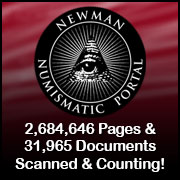
About UsThe Numismatic Bibliomania Society is a non-profit association devoted to the study and enjoyment of numismatic literature. For more information please see our web site at coinbooks.org SubscriptionsThose wishing to become new E-Sylum subscribers (or wishing to Unsubscribe) can go to the following web page link MembershipThere is a membership application available on the web site Membership Application To join, print the application and return it with your check to the address printed on the application. Print/Digital membership is $40 to addresses in the U.S., and $60 elsewhere. A digital-only membership is available for $25. For those without web access, write to: Charles Heck, Treasurer
AsylumFor Asylum mailing address changes and other membership questions, contact Chuck at this email address: treasurer@coinbooks.org SubmissionsTo submit items for publication in The E-Sylum, write to the Editor at this address: whomren@gmail.com BUY THE BOOK BEFORE THE COIN |
- WAYNE'S WORDS: THE E-SYLUM OCTOBER 20, 2019
- FINAL REMINDER FOR KOLBE LIBRARY SALE
- NEW BOOK: CASH IN YOUR COINS, 3RD EDITION
- NEW BOOK: BREWERY TOKENS OF URUGUAY
- BANKNOTE BOOK COLOMBIA CHAPTER PUBLISHED
- NEW BOOK: PAPER MONEY MESSAGES (CHRISTIANITY)
- BOOK REVIEW: IN GOD WE TRUST
- NEWMAN VERMONT RESEARCH NOTES DIGITIZED
- VIDEO: FUTURE OF NUMISMATICS: SALZBERG
- AUDIO: COIN WORLD PODCAST WITH TOM BABINSZKI
- ANOTHER "CSA YANKEE SLAYERS" MEDAL
- NOTES FROM E-SYLUM READERS: OCTOBER 20, 2019
- VOCABULARY TERM: FINISH AND FINISHING, PART ONE
- REVEREND FATHER GIUSEPPE MARIA FINOTTI (1817-1879)
- HARVEY STACK'S NUMISMATIC FAMILY, PART 55
- NATIVE AMERICAN COIN FIGURE PERATROVICH
- GARRETT: COIN TONING A MATTER OF TASTE
- 2019 IACA COIN AWARD WINNERS ANNOUNCED
- SELECTED CORONATION MEDALS
- WAYNE'S NUMISMATIC DIARY: OCTOBER 20, 2019
- HOW THE $4 STELLAS CAME TO BE
- TURNER PAINTING FEATURES ON NEW £20 NOTE
- SWISS BANKNOTE FORGERY DROPS
- WHAT'S YOUR COLLECTION EVACUATION PLAN?
- LOOSE CHANGE: OCTOBER 20, 2019
- FEATURED WEB PAGE: GORGONS OF PARION
Click here to access the complete archive a
Click here to unsubscribe (scroll down)
To comment or submit articles, reply to whomren@gmail.com
Content presented in The E-Sylum is not necessarily researched or independently fact-checked, and views expressed do not necessarily represent those of the Numismatic Bibliomania Society.
WAYNE'S WORDS: THE E-SYLUM OCTOBER 20, 2019
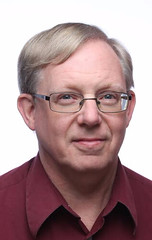 New subscribers this week include: Kristen Jameson Brunda, Jonathan Harris, Dave Mills, Carolyn Rutherford, and Greg Shane. Welcome aboard! We now have 6,005
subscribers.
New subscribers this week include: Kristen Jameson Brunda, Jonathan Harris, Dave Mills, Carolyn Rutherford, and Greg Shane. Welcome aboard! We now have 6,005
subscribers.
Thank you for reading The E-Sylum. If you enjoy it, please send me the email addresses of friends you think may enjoy it as well and I'll send them a subscription (but let me know if they are located in the European Union). Contact me at whomren@gmail.com anytime regarding your subscription, or questions, comments or suggestions about our content.
Welcome to our newest advertiser - David Kahn Rare Coins. Thank you for your support! This week we open with a final reminder for the Kolbe library sale, four new books, one review, updates from the Newman Numismatic Portal, and a podcast review.
Other topics this week include the IACA Excellence in Currency Awards, "In God We Trust", the "Yankee Slayers" medal, collector J. M. Finotti, coin toning, coronation medals, collection evacuation plans and the Gorgons of Parion.
To learn more about “The Widow Game”, Uruguayan brewery tokens, Colombia and French paper money, paper money and Christianity, Vermont coppers, medal finishes, proof 1827 quarters, sulphatization, abrasive blasting, Herman the Pianist, Smurf-fingered coin dealers, Stella cufflinks, and the coin banjo, read on. Have a great week, everyone!
Wayne Homren
Editor, The E-Sylum
FINAL REMINDER FOR KOLBE LIBRARY SALE
Last call for the upcoming Kolbe & Fanning sale of the George F. Kolbe library! -Editor
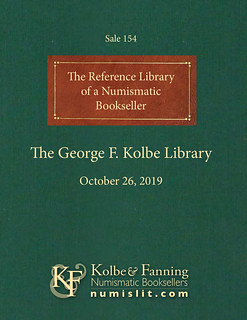 Kolbe & Fanning Numismatic Booksellers are offering the George F. Kolbe Library for sale by auction this Saturday, October 26, 2019, beginning at 12:00 noon eastern
time. The auction comprises an outstanding offering of numismatic bibliographies, reference books, catalogues, and special editions from around the world, amassed over a career
spanning more than fifty years. The sale may be viewed at bid.numislit.com.
Kolbe & Fanning Numismatic Booksellers are offering the George F. Kolbe Library for sale by auction this Saturday, October 26, 2019, beginning at 12:00 noon eastern
time. The auction comprises an outstanding offering of numismatic bibliographies, reference books, catalogues, and special editions from around the world, amassed over a career
spanning more than fifty years. The sale may be viewed at bid.numislit.com.
Bids may be placed via post, email, fax or phone, as well as online. Bids placed via post, email, fax or phone must be received by Friday, October 25, the day before the sale, in order for them to be processed. Kolbe & Fanning uses Auction Mobility as our third-party online bidding platform. Auction Mobility is an app-based platform allowing users the ability to participate in the sale through phones, tablets and computers. To register for the sale, bidders must go to bid.numislit.com and sign up. Once you have set up an account, you may browse lots, place advance bids, or participate in the live sale online. Please note that as this is a third-party site, your login information for the main K&F site will not work for the auction site: you need to establish a separate account. Those wishing to participate on their devices can download the Kolbe & Fanning app through the Apple or Google Play Store.
Advance absentee bids may also be placed online at bid.numislit.com; live internet bidding will be available during the sale itself through the same platform. Bidders placing absentee bids will be able to tell immediately whether or not they have the current high bid. Bidders will also receive email notifications when they are outbid before the sale (users of the app may opt to receive push notifications as well).
Kolbe & Fanning Numismatic Booksellers LLC is a licensed and bonded auction firm in the State of Ohio. For more information, please see the Kolbe & Fanning website at numislit.com or email David Fanning at df@numislit.com. To register for the sale, go to bid.numislit.com. We look forward to your participation on October 26.
This is a sale that shouldn't be missed. The rarity and quality of many lots are unsurpassed - this library is the result of a lifetime of careful study and collecting; many of these items will not be seen on the market again for quite a few years. -Editor
To read the earlier E-Sylum articles, see:
KOLBE & FANNING SALE 154 ANNOUNCED (https://www.coinbooks.org/v22/esylum_v22n39a02.html)
KOLBE LIBRARY SALE HIGHLIGHTS PART2 (https://www.coinbooks.org/v22/esylum_v22n40a03.html)
KOLBE LIBRARY SALE HIGHLIGHTS PART3 (https://www.coinbooks.org/v22/esylum_v22n41a02.html)

NEW BOOK: CASH IN YOUR COINS, 3RD EDITION
Dennis Tucker of Whitman Publishing submitted this article about the new edition of Beth Deisher's book, Cash in Your Coins. Thanks! -Editor
Beth Deisher Teaches Families How to Win “The Widow Game”
by Dennis Tucker
Beth Deisher’s Cash In Your Coins: Selling the Rare Coins You’ve Inherited has been released in a new third edition by Whitman Publishing. The 304-page volume is available online and in bookstores and hobby shops nationwide. Here, Whitman publisher Dennis Tucker recalls how the book came to be.
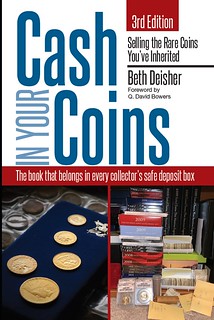 Beth Deisher’s groundbreaking Cash In Your Coins was first published in June 2013. Before that, occasional articles and columns and a few books gave guidance to
inheritors finding themselves in possession of a rare-coin collection. David L. Ganz and Q. David Bowers (each a past president of the American Numismatic Association) have
written on the subject. The 90-page Rare Coin Estate Handbook (Halperin, Ivy, and Rohan, 2000) focused on estate-planning for active collectors. In 2010 professional
numismatist Jeff Ambio wrote What to Do With Granddaddy’s Coins.
Beth Deisher’s groundbreaking Cash In Your Coins was first published in June 2013. Before that, occasional articles and columns and a few books gave guidance to
inheritors finding themselves in possession of a rare-coin collection. David L. Ganz and Q. David Bowers (each a past president of the American Numismatic Association) have
written on the subject. The 90-page Rare Coin Estate Handbook (Halperin, Ivy, and Rohan, 2000) focused on estate-planning for active collectors. In 2010 professional
numismatist Jeff Ambio wrote What to Do With Granddaddy’s Coins.
Then in 2012 Beth Deisher retired as Coin World’s editor. She left that post with decades of real-world experience answering questions asked not only by collectors, but also by the spouses and children who inherited their coin collections. Beth brought the perfect mix of talent and expert knowledge to a new full-length book idea. “The premise is if you don’t know what you have, and you don’t know its value, then you’re at a disadvantage when it comes to selling,” she said. “My book’s purpose is to help readers approach selling with confidence.”
We envisioned a volume of several hundred pages, with explanations of the difference between wholesale and retail, how to use price guides, and how to create different types of inventories; full-color illustrations of every U.S. coin to help non-collectors identify their property; and information about tax laws and their consequences. It would be written not from a dealer’s perspective or from a collector’s perspective, but for people who inherit coins and know virtually nothing about them.
At the June/July 2013 Summer Seminar of the American Numismatic Association, at Colorado College in Colorado Springs, I co-taught a course with Beth, Kenneth Bressett, and Robert Hoge on writing, research, editing, and publishing. During the seminar I spoke with many dealers and collectors, and it was gratifying to hear, over and over, “I’m so glad Beth wrote Cash In Your Coins.” Her book was fresh off the presses, and it was already a topic of vibrant conversation.
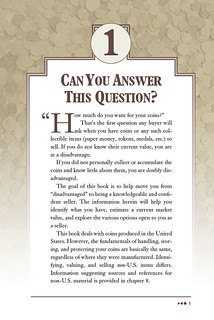

Discussing the book that summer with Wayne Homren, editor of The E-Sylum (the online journal of the Numismatic Bibliomania Society), I remarked:
"Collectors’ widows, children, and other heirs are one obvious audience for Cash In Your Coins. But equally I feel it’s a book for collectors themselves—not necessarily to learn about the latest VAMs or American Silver Eagle sets, but to keep in the safe-deposit box along with their collections. It’s peace of mind for them, knowing that Beth Deisher will guide their families when the time comes. “The widow game” is how one dealer referred to the treatment dished out by unscrupulous hotel-ballroom buyers and other fleece artists. Beth has given the widows a way to fight back!
"I’ve also heard from longtime dealers and collectors who like having a single resource that explains capital gains, insurance, declarations of value in an estate inventory, the effects of recent legislation, etc. Two examples: the new tax rates and thresholds that affect collectors, set by the American Taxpayer Relief Act of 2012; and the 3.8% tax that goes into effect December 31 of this year. Not surprisingly, many collectors aren’t up to date on this kind of legislation. Beth explains it all with the skill and clarity of a longtime journalist."
The first edition of Cash In Your Coins was praised in reviews in print and online, and it won awards including “Best Specialized Book, Numismatic Investments” from the Numismatic Literary Guild. It quickly sold out its substantial first print run. In September 2014 we published an expanded second edition, with new case studies and illustrations, a new chapter on taxes, and other updates. Both editions went through multiple printings.
Cash In Your Coins clearly fills a need within the hobby community. Given the popularity of the first two editions and, now in 2019, publication of the third, I’m pleased that the book has taken its place among Whitman Publishing’s list of “evergreen” titles. And I’m thankful that Beth Deisher, who in recent years has spearheaded the national conversation around anti-counterfeiting education, continues to be a leader in our field, looking out for average collectors and their families.
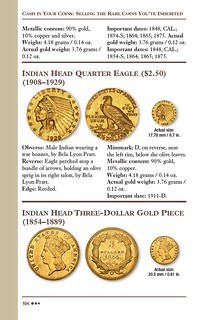
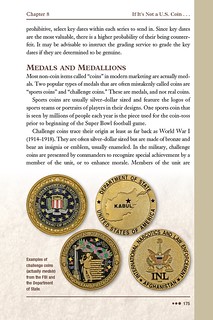
Cash In Your Coins: Selling the Rare Coins You’ve Inherited, 3rd edition
By Beth Deisher; foreword by Q. David Bowers
ISBN 0794847242
Softcover, 6 x 9 inches
304 pages
Full color
Retail $14.95 U.S.
https://www.whitman.com/store/Inventory/Detail/Cash-In-Your-Coins-3rd-Edition+0794847242
The book wastes no time in getting to the central point. Page One is headlined, "Can You Answer This Question?" The question is the first thing most coin dealers will ask when presented with items offered for sale: "How much do you want for your coins?"
If you don't know, you're at a huge disadvantage. And if you only think you know, you may be at even more of a disadvantage. I helped a friend's widow sell a coin collection many years ago. Before he passed he'd told her he thought it was worth $10,000. I helped her sell it for a total of over $100,000. Had she gone to a random coin dealer first she might have happily accepted an offer in the $9,000-$11,000 range. Yet she would have left tens of thousands of dollars on the table.
I keep a copy of the book on my desk in plain sight where my family could find it quickly should I depart the scene. I recommend every collector do the same. -Editor
To read the earlier E-Sylum articles, see:
NEW BOOK: CASH IN YOUR COINS (https://www.coinbooks.org/esylum_v16n27a04.html)
NEW BOOK: CASH IN YOUR COINS, 2ND EDITION (https://www.coinbooks.org/esylum_v17n35a03.html)
BOOK REVIEW: CASH IN YOUR COINS, 2ND EDITION (https://www.coinbooks.org/esylum_v17n51a07.html)
THE BOOK BAZARRE
NEW BOOK: BREWERY TOKENS OF URUGUAY
E-Sylum reader Horacio Morero Ferrero has published a new book on the brewery tokens of Uruguay. Congratulations! -Editor
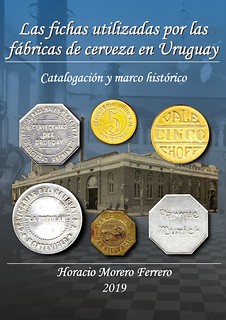 “Las fichas utilizadas por las fábricas de cerveza en Uruguay – Catalogación y marco histórico”
“Las fichas utilizadas por las fábricas de cerveza en Uruguay – Catalogación y marco histórico”
(“The tokens used by the breweries in Uruguay - Cataloging and historical framework”)
By Horacio Morero Ferrero.
Edited by “Linardi & Risso” library.
Printed by “Gráfica Mosca” in Montevideo, Uruguay.
110 pages. Full colour. In Spanish.
It is the first book specifically published on Uruguayan tokens. It presents a meticulous cataloging of the metal coins used by the breweries during the first half of the XX century. In addition, it offers varied data and comments on the tokens: at what period of time and where and how they were used. This accumulation of information generates an inexorable journey through the past of the beer industry. Two brief chapters, one at the beginning dedicated to the XIX century and another at the end dedicated to the last seventy years up to date, end up closing a historical thread of these pages that are more than a mere catalog. They are also a walk through the very rich economic history of Uruguay. In total, 55 tokens are cataloged in the book. The book is now available on eBay.
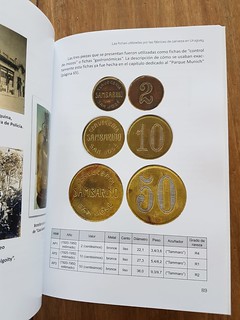
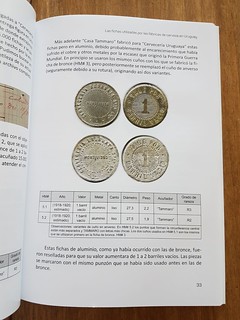
The author, Horacio Morero Ferrero, is a former president of the Instituto Uruguayo de Numismática. He is a member of IFINRA (Instituto Federal de Investigadores Numismáticos de la República Argentina). He also won the “Alberto Coco Derman” prize in 2015 given by FENYMA (Federación de Entidades Numismáticas y Medallísticas de Argentina) with his work “Numismática y metamorfosis: la reacuñación de los patacones de las Provincias del Río de la Plata en Brasil” (“Numismatics and metamorphosis: the overtrikes of the crowns of the Provinces of the Rio de la Plata in Brazil”), edited in Spanish and Portuguese.
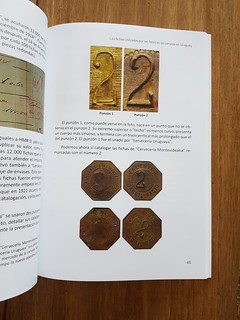

For more information, or to order, see:
Beer Tokens - Las Fichas Utilizadas Por Las Fábricas De
Cerveza En Uruguay (https://www.ebay.com/itm/Beer-Tokens-Las-Fichas-Utilizadas-Por-Las-Fabricas-De-Cerveza-En-Uruguay/174049098349)
BANKNOTE BOOK COLOMBIA CHAPTER PUBLISHED
Owen Linzmayer publishes The Banknote Book, a useful, constantly updated electronic reference. He recently announced via email the availability of the chapter on the banknotes of Colombia. It's available for $9.99. -Editor
 In honor of the Columbus Day holiday here in the United States, we're very pleased to announce that the Colombia chapter is now available for individual sale and as
a free download to subscribers. Coverage of the earlier issues will be added to the chapter once research is complete. Thanks to all the contributors who have helped provide
information and images. Keep that input coming!
In honor of the Columbus Day holiday here in the United States, we're very pleased to announce that the Colombia chapter is now available for individual sale and as
a free download to subscribers. Coverage of the earlier issues will be added to the chapter once research is complete. Thanks to all the contributors who have helped provide
information and images. Keep that input coming!
Colombia (South America)
This 48-page catalog covers notes issued by the Banco de la República (Bank of the Republic) from 1923 to present. Published 14.10.2019.
For more information on The Banknote Book, see:
http://www.banknotenews.com/banknote_book/banknote_book.php

NEW BOOK: PAPER MONEY MESSAGES (CHRISTIANITY)
The third volume of Jeffrey Wing's Paper Money Messages series in now available. -Editor
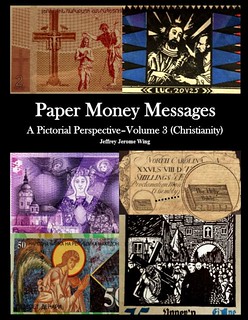 This book is for a wide range of readers and not just those that are interested in Paper Money or Christianity. This book will help people understand diverse views of
history in a new way. Readers will be intrigued by the study of Christianity as it is expressed in the text and imagery of paper money. Photos of paper money appear throughout the
book along with an explanation of the personalities and events in Christian history that became memorialized on the world’s money.
This book is for a wide range of readers and not just those that are interested in Paper Money or Christianity. This book will help people understand diverse views of
history in a new way. Readers will be intrigued by the study of Christianity as it is expressed in the text and imagery of paper money. Photos of paper money appear throughout the
book along with an explanation of the personalities and events in Christian history that became memorialized on the world’s money.
The book will explain Christianity’s influence upon the world, and its distinction from other religions. Catholicism and Protestantism are discussed, as well as the differences between the two. Readers will gain a greater understanding of the religion of Islam and the traditions of the Muslim people and see that paper money images can trace the early history of the Mormon Church.
The book’s artwork of the imagery on the currency makes it a new, stimulating way to study Christianity and those that played such a significant role in its history. Christianity has been a large part of the world’s history for almost 2,000 years, and that story is the one told in this book. One topic is the separation of Church and State, another is the Protestant Reformation that caused Christian believers to question the basic tenets of the Catholic Church and the powerful hold it had on a person’s life. The settlement of the New World, America, is largely a result of the escape from religious persecution in Europe and evolved with a whole new set of Christian values. Devoted men and women appear in each of the stories who were instrumental in spreading, preaching and defending Christianity, and some of whom were martyred for it. The complete subject matter of this book about Christianity is extensive.


The last chapter of this book brings attention to those who have given their lives to the service of Christ, including pastors, doctors, nurses, activists, teachers, poets, authors, and those who work with the poor. This book presents Christianity in a different light, through the imagery of paper money, and displays its continued spread throughout the world by countless, devoted followers as first commissioned by Jesus Christ so many centuries ago.
Paper Money Messages-Vol 3 (Christianity) is now available on Amazon." Here is information from the web site and Amazon. This book makes a great Christmas present because it shows the "reason for the season." The price is $49.99.
Author Jeffrey Wing adds:
I hope that this book will be my best seller due to the subject of Christianity, which I believe will be very interesting to a wide range of readers. It will help non-Christians understand how Christianity has impacted history. Personally, I believe this book is important because it will help Catholics, Orthodox and Protestants better understand past history and is a reminder of the shared core beliefs of Christianity. Most importantly, it brings attention to the many great Christian men and women that have made sacrifices to help others.
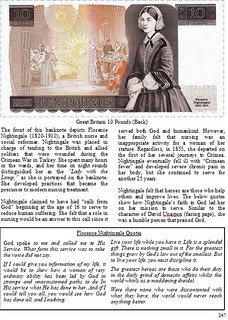
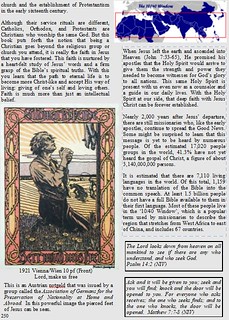
Last week's new book on the "In God We Trust" motto also generated a great deal of interest. A great topic, and I'm not sure if a book on banknotes has ever focused on this before. -Editor
For more information, or to order, see:
Paper Money Messages- Vol 3 (Christianity)
(https://www.amazon.com/Paper-Money-Messages-Vol-Christianity/dp/1530337798/ref=sr_1_1)
Paper Money Messages (https://papermoneymessages.com/)
To read the earlier E-Sylum articles, see:
NEW BOOK: PAPER MONEY MESSAGES VOLUME 2 (https://www.coinbooks.org/v21/esylum_v21n44a05.html)
NEW BOOK: IN GOD WE TRUST (https://www.coinbooks.org/v22/esylum_v22n41a04.html)
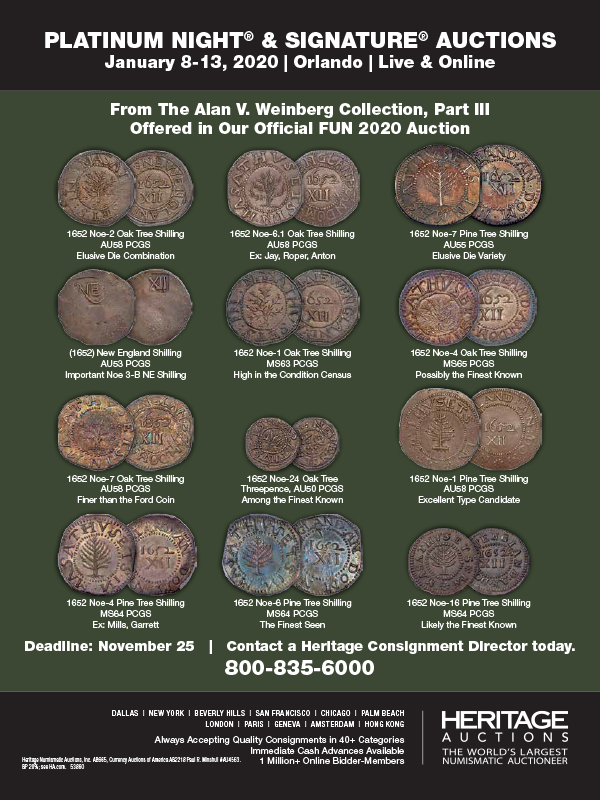
BOOK REVIEW: IN GOD WE TRUST
Via Dennis Tucker of Whitman Publishing, Dave Bowers submitted these thoughts on Bill Bierly’s new book, In God We Trust: The American Civil War, Money, Banking, and Religion. Thanks! -Editor
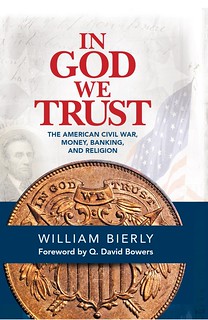 Bill Bierly’s In God We Trust is one of the most detailed, intricate, and fascinating books in the field of American numismatics—and in American history in
general.
Bill Bierly’s In God We Trust is one of the most detailed, intricate, and fascinating books in the field of American numismatics—and in American history in
general.
The national motto “In God We Trust” is familiar to all of us. Look in your pocket change or wallet and you will find it on every United States coin and paper bill. Before reading the manuscript to Bierly’s book I thought I knew all about the subject.
Some years ago I wrote an article, “God in Your Pocket,” for my local Presbyterian Church, telling of the motto’s use on coins. I knew it appeared on pattern coins in 1863 and in 1864 made its first appearance on a circulating coin, the bronze two-cent piece, a new denomination introduced that year. I had the obscure knowledge that “In God We Trust” is the motto of the State of Florida and was used on certain National Bank notes issued in that state in the second half of the nineteenth century. I also knew that the $5 Silver Certificates of the Series of 1886 illustrate the reverse of a Morgan silver dollar of that year, with the motto as part of the design.
But what I didn’t know were 101 other details—make that many more than 101 different details—as to how the motto came to be, how it was used over the years, and the wide cast of characters in the Treasury Department and elsewhere who participated in its use on money.
All too often, books, newspaper columns, and magazine articles about popular subjects lack many details. For Whitman Publishing I wrote a volume on President Ronald Reagan, and I read every book and important study I could find. There were very few details about his personal day-to-day life. Not to worry about the historical personalities involved with “In God We Trust.” While you might not learn the names of the protagonists’ pet cats or their favorite dime novels, there is not much else missing in Bierly’s excellent narrative. Dozens of cast members play cameo roles and small walk-on parts.
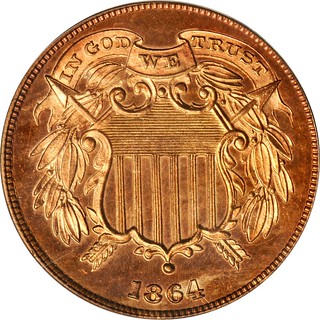
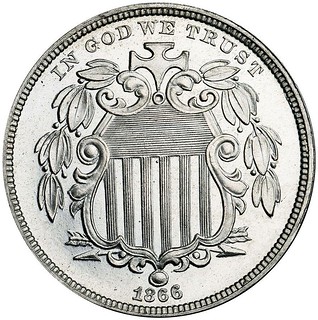
It is probably correct to say that no other researcher could add to Bill Bierly’s efforts! He collaborated with professional numismatists, leaving no stone (or coin) unturned in the creation of this book. Commonly believed myths and misunderstandings he examined, debunked, and corrected. Hundreds of historical images were collected, many of which have never been published in a numismatic reference, to which have been added beautiful photographs of rare coins, patterns, tokens, medals, and paper currency, including close-ups of important characteristics. All of this required a lot of work, creativity, and careful attention to detail.
Further on the subject of detail: I enjoy learning about and digging deeply into previously unexplored subjects. I have written books on the Waterford Water Cure (a health spa in Waterford, Maine, that counterstamped coins as advertisements), The Strange Career of Dr. G.G. Wilkins (about a countertstamper who was a dentist, also operated a restaurant with a caged bear in front, and was suspected of passing counterfeit money and also burning down a neighbor’s barn), and, for good measure, books about Alexandre Vattemare (a French numismatist who visited America and became important to the development of libraries here) and Augustus B. Sage (the teenaged coin dealer who founded the American Numismatic Society in 1858).
Each of these books was popular in its time, despite their obviously obscure subjects. Readers find satisfaction in a well-told story that brings new depth and insight.
That is precisely what we get with In God We Trust, debuting this holiday season. Anyone with a combined interest in American history and numismatics will find a new world of important information, fascinating details, and previously unconnected relationships.
The motto “In God We Trust” is hardly history alone. It is so much more, and it means different things to different people. Today there are vocal critics who feel that it has no place on coins or paper currency. For that matter, some believe that God has no place in public (and in some cases, private) life. On the other hand, many more people do indeed believe in the Supreme Being. Sometimes it just seems the naysayers get all of the publicity.
Bill Bierly’s In God We Trust approaches the subject respectfully on all sides, with color, personality, dashes of humor, and dogged pursuit of the truth. He has given us a smorgasbord: there is a lot to choose from. If you are a collector and strictly so, with no interest in the million points where numismatics touches American history, you can simply immerse yourself in the coins, paper money, tokens, and medals. If you are like me, however, and enjoy every historical highway and byway connected to American money, you will read and find pleasure in the entire book from start to finish.
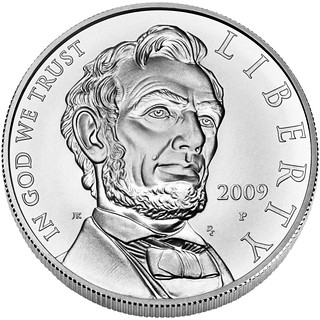
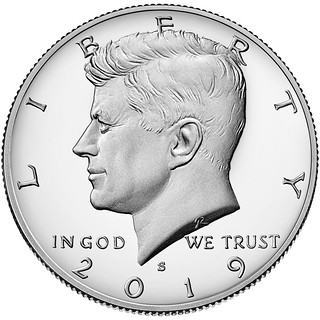
To read the earlier E-Sylum article, see:
NEW BOOK: IN GOD WE TRUST (https://www.coinbooks.org/v22/esylum_v22n41a04.html)
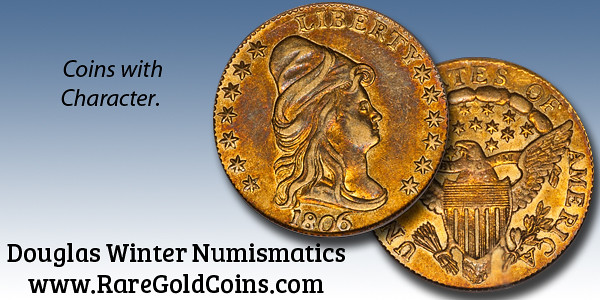
NEWMAN VERMONT RESEARCH NOTES DIGITIZED
The latest addition to the Newman Numismatic Portal is a set of notes and correspondence for Eric Newman's 1958 Vermont Coinage research paper. Project Coordinator Len Augsburger provided the following report. -Editor
Eric P. Newman Research Notes for Vermont Coinage Article Digitized
In 1958 Eric P. Newman published “A Recently Discovered Coin Solves a Vermont Numismatic Enigma” in the American Numismatic Society (ANS) centennial anthology. Joel Orosz summarized this work in the Newman biography:
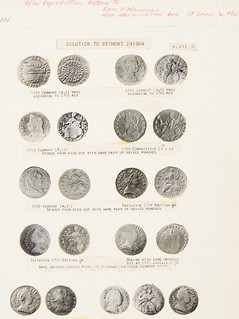 “Detective Newman is again on the case, describing a heretofore unknown coin that explains why the series 1787 and 1788 Vermont coppers with bust facing right display
the distinctively British insignia of the crosses of St. Andrew and St. George in the shield on the reverse, and not the emblem of Vermont. After a thorough review of the
literature regarding this phenomenon, Newman describes a counterfeit British halfpence excavated in Stepney, Connecticut, which can be punch-linked to the Vermont coppers, and
demonstrates how the punches originally used to counterfeit the halfpence were later diverted to Vermont copper production after the June 7, 1787 Machin’s Mills agreement was
signed. This finding settled a century-old scholarly debate.”
“Detective Newman is again on the case, describing a heretofore unknown coin that explains why the series 1787 and 1788 Vermont coppers with bust facing right display
the distinctively British insignia of the crosses of St. Andrew and St. George in the shield on the reverse, and not the emblem of Vermont. After a thorough review of the
literature regarding this phenomenon, Newman describes a counterfeit British halfpence excavated in Stepney, Connecticut, which can be punch-linked to the Vermont coppers, and
demonstrates how the punches originally used to counterfeit the halfpence were later diverted to Vermont copper production after the June 7, 1787 Machin’s Mills agreement was
signed. This finding settled a century-old scholarly debate.”
Newman’s research file for this article is now online, most notably including the original paste-ups with photographic plates. Also included here are related correspondence and research notes in Newman’s hand.
Link to Eric P. Newman research file for A Recently Discovered Coin Solves a Vermont Numismatic Enigma:
https://archive.org/details/vermontenigma1958epnresearch
Link to Centennial Publication of the American Numismatic Society on Newman Portal:
https://nnp.wustl.edu/library/book/538305
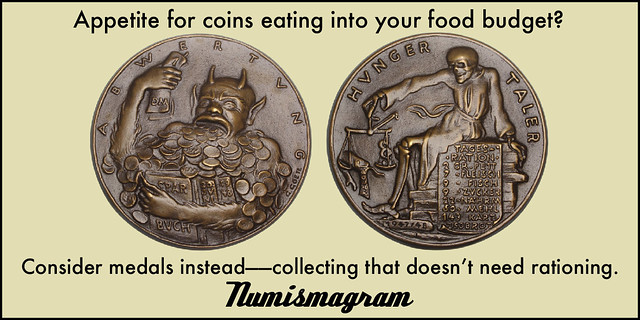
VIDEO: FUTURE OF NUMISMATICS: SALZBERG
These are selections from the David Lisot Video Library that feature news and personalities from the world of coin collecting. David has been attending coin conventions since
1972 and began videotaping in 1985. The Newman Numismatic Portal now lists all David’s videos on their website at:
https://nnp.wustl.edu/library/multimediadetail/522852
Here's one from the ANA Future of Numismatics Symposium. -Editor
 Future of Numismatics Symposium: Mark Salzberg
Future of Numismatics Symposium: Mark Salzberg
An excerpt of the video is available for viewing on the Coin Television YouTube Channel at:
https://youtu.be/ExWNKsuT1s4
This video is a highlight from Future of Numismatics Symposium: What the Future May Hold
Donn Pearlman, Moderator, David Lisot, Video Producer, CoinTelevision.com.
At the 2019 World’s Fair of Money the American Numismatic Association asked some of the coin industry’s most influential leaders about what they believe is in store for the future of the hobby. Hear these titans of numismatics share what they believe the future holds.
AUDIO: COIN WORLD PODCAST WITH TOM BABINSZKI

This week I had the chance to listen to one of the Coin World podcasts with hosts Jeff Stark and Chris Bulfinch. This episode features E-Sylum reader Tom Babinszki, author of The Blind Coin Collector blog.
I really enjoyed it. Chris and Jeff have fun with it, mixing things up with quiz questions and fun banter on a variety of numismatic topics in addition to the primary interview. Tom was an excellent guest. Check it out on Apple, Google, Spotify or wherever you get your podcasts. -Editor
Jeff and Chris talk to Tom Babinszki, author of The Blind Collector, a blog about his experiences as a visually impaired collector.
To listen the complete podcast, see:
EP026: Accessible Currency: Tom Babinszki, Canadian Bullion, Jackass Notes
(https://www.coinworld.com/news/us-coins/cwpod_ep026)
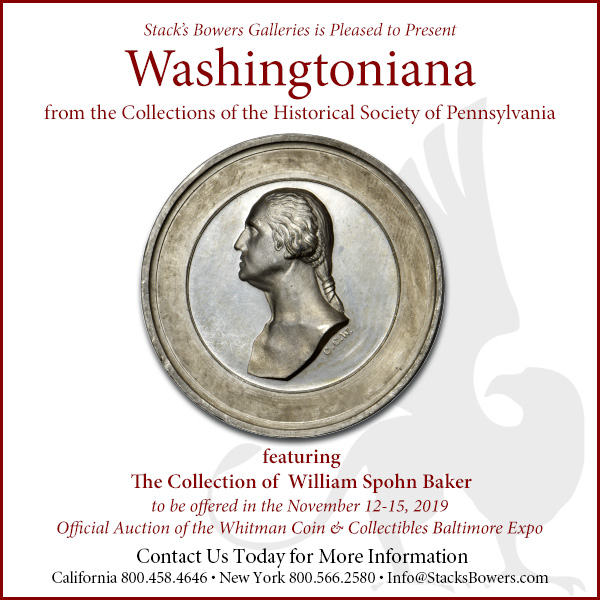
ANOTHER "CSA YANKEE SLAYERS" MEDAL
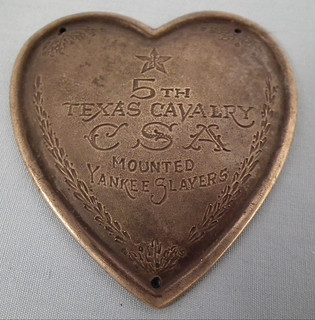

Regarding the"CSA Yankee Slayers" medal discussed last week as a fake, Mike Hodder writes:
I catalogued a 5th Texas Cavalry piece for a Coin Galleries sale years ago. It resembled an item of horse tack, like a breastplate. I don't remember the sale date and don't have a library to look for the sales catalogue so I can't supply a citation. The piece will have been illustrated. Someone out there in Numisbibliomania world will have the catalogue and can supply the reference.
I desperately wanted the piece to be genuine. It wasn't, of course, so the piece didn't sell. I took it in so I could research the Texas outfit and write something about it.
A search for "Texas Cavalry" on the Newman Numismatic Portal didn't locate a Coin Galleries listing, but did turn up a reference in the January 16-18, 2001 Stack's Americana sale. Lot 326 covers most of page 81. -Editor

326 Undated [ca.l900] Heart-shaped Badge for the 5th Texas Cavalry. Brass. 45.44 grams. 65.6 x 62.7 mm. 2.3 mm thick. Extremely Fine. Darkened. Made in the shape of a cavalry mount’s breast plate (a very similar one, with a prominent “5” on it, can be seen on a mount in Gary Zaboly’s painting “Charge of the Texas Lancers at Valverde”). The stock for the medal was cast brass plate or strip (some casting flaws and cooling eddies remain visible). The form of the medal was mechanically stamped out of the strip or sheet, raising the front edge into a rim, probably in the same operation. The design elements were added by hand afterwards. On the front is engraved in a nice, ornate block hand “[Star] 5th TEXAS CAVALRY C S A MOUNTED YANKEE SLAYERS”. In the upper left curve of the back is engraved “CSA” while along the edge at the lower right is “San Antonio 1862”. Apparently unpublished and the first we have seen.
The engraving on the front was professionally done and looks crisp and clean. The letters are well formed and evenly spaced and the overall design has been made to fit the shape and size of the heart shaped piece. The engraving on the back looks at first glance to be less skillfully done but on closer inspection is actually by the same hand that executed the front. The style of the letters suggests a date in the early 20th c. more than the 1862 date on the back. The designation “Fifth Regiment Texas Mounted Volunteers” was in use 1861-62 but was changed in 1863 to “Fifth Regiment Texas Cavalry”, and this further suggests a later date than 1862 for this badge. There is one small hole each near the rim at upper left and right, these punched not drilled] through from back to front. Pendant from each hole is a sprig of four oak leaves. Around the rim at the left and right and framing the inscription in the center is an olive branch. At the base near the rim is a third small hole like the other two, but with a sprig of three oak leaves pointing upwards.
The Fifth Regiment Texas Mounted Volunteers, part of Brigadier General Henry H. Sibley’s Brigade, the Army of New Mexico, was raised in San Antonio at the end of the summer, 1861. Although designated a cavalry unit the Fifth were really mounted infantrymen. There were approximately 1,000 officers and men in the unit, most of whom were from Waco, San Antonio, and Austin. The men were required to bring their own mounts and had to equip themselves with weapons, ammunition, and clothing as best as they could. No uniforms or horse tack were issued (except in a few particular cases), nor were there any unit badges distributed. Those men who had no weapons were given whatever was at hand, including ... guns and double barreled shotguns. The latter came in handy during the New Mexico campaign.
The 2001 piece appears nearly identical to the one discussed last week. There are four more paragraphs describing the unit's history. -Editor
Alan Weinberg adds:
As with other fantasies, someone researched the historical info pertaining to the piece before creating it. I might add that the engraving style and metallic fabric resembles very closely various fantasy Ku Klux Klan smalls. I have little doubt they are identically sourced.
To read the catalog entry on NNP, see:
Americana: Colonial and Federal Coins, Medals and Currency, Featuring The William
O'Donnell Collection of New Jersey Coppers (https://nnp.wustl.edu/library/auctionlots?AucCoId=3&AuctionId=517446&page=82)
To read the complete article, see:
NUMISMATIC NUGGETS: OCTOBER 13, 2019 : "CSA Yankee Slayers" Medal
(https://www.coinbooks.org/v22/esylum_v22n41a19.html)
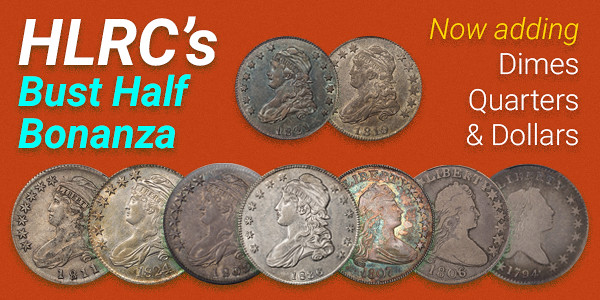
NOTES FROM E-SYLUM READERS: OCTOBER 20, 2019
The Owen Discovery 1794 Starred Reverse Cent

Pete Smith writes:
The October 13, 2019 issue of The E-Sylum included a report from Gene Owen on the 1794 Starred Reverse Cent he discovered. He wrote, “I bought a 1794 book from some guy in Michigan who said mine would be called the ’Owen Discovery‘ !” Editor Homren commented, “I assume the 1794 book was Al Boka's 2005 book Provenance Gallery of the Year 1794, United States Large Cents.” I suggest there may be another answer.
I published 250 copies of The Story of the Starred Reverse Cent around July of 1986. Gene Owen was the first person to report a coin that was not in the book. I sold him copy 105 of the book on November 4, 1986. I wrote up the discovery for the January 15, 1987 issue of Penny- Wise, on page 49.
Early in 1987 I had three starred reverse cents in my apartment that had been loaned for photography. My photos were published in the July 15, 1987 issue of Penny-Wise on page 212. The first coin was the one called the Gene Owen discovery.
Gene was fuzzy on some of the details - Glad we straightened this out. -Editor
To read the earlier E-Sylum article, see:
NOTES FROM E-SYLUM READERS: OCTOBER 13, 2019 : 1794 Starred Reverse Cent Finds
(https://www.coinbooks.org/v22/esylum_v22n41a11.html)
Those Bright Red Circulating Memorial Cents
Last week I reported seeing an unusual number of bright red Lincoln Memorial cents in circulation. -Editor
David Lange writes:
I believe I can shed some light on the mystery of so many fresh-looking Lincoln Memorial cents that you've been observing.
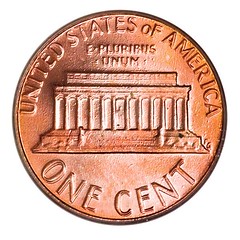 The peak period for collecting coins from circulation was the 1960s, when these coins were new. Many thousands of persons filled each opening as the coins came their
way. Some 50 years later, these collectors are either passing away or otherwise disposing of their collections. Though theoretically worth two cents each for their copper content,
the cost of recovering the metal from pre-1982 cents would exceed that amount, even if the practice were legal. The coins thus get returned to circulation when cashed in at a bank
or coin redemption machine, and these may include a complete run from 1959 onward in BU condition.
The peak period for collecting coins from circulation was the 1960s, when these coins were new. Many thousands of persons filled each opening as the coins came their
way. Some 50 years later, these collectors are either passing away or otherwise disposing of their collections. Though theoretically worth two cents each for their copper content,
the cost of recovering the metal from pre-1982 cents would exceed that amount, even if the practice were legal. The coins thus get returned to circulation when cashed in at a bank
or coin redemption machine, and these may include a complete run from 1959 onward in BU condition.
I buy coin sets frequently to get desirable folders or albums for my collection, carefully removing the coins. l can then sell the undamaged Wheat cents on eBay by re-inserting them into one of the countless common coin boards or folders I have in stock, but the Memorial cents don't even pay for the cost of shipping. Thus, I dump them into the ashtray of my car and use them up whenever paying in cash. Ditto for the corroded and damaged Wheat cents that come my way. This is how a bright red 1961 cent reappears in circulation.
If I buy a collection of circulated Jefferson nickels to get their holder, the only coins worth more than face value are the 1938-D and S, 1939-D and S, 1950-D and the silver war nickels. The rest go right back into circulation, including many 70-year-old coins in XF and AU condition.
There's a long history of such recycling of common, low-value coins. When I was collecting coins from circulation in the second half of the 1960s, I frequently found XF or AU, semi-key Jefferson nickels such as 1946-S and 1951-S. What was especially puzzling was that the common P and D nickels of those years typically were quite worn from 20 years service. Only later did I learn that when the speculative mania for BU rolls collapsed in 1964, many persons were buried in their investment, having taking out loans to buy rolls of common coins. To recover some of this money, these semi-key coins were simply cashed in at face value, becoming common in lightly worn condition for the next few years.
I have some rolls of my own put away somewhere in the mid 1970s when there was talk of a change in the composition of the cent. Luckily I later found more interesting and profitable numismatic pursuits. Perhaps their future fate is to be spent as well. At least that might help encourage a future collector or two. -Editor
To read the earlier E-Sylum article, see:
LINCOLN MEMORIAL CENT VARIETIES (https://www.coinbooks.org/v22/esylum_v22n41a21.html)
The Colnect Banknote Catalog
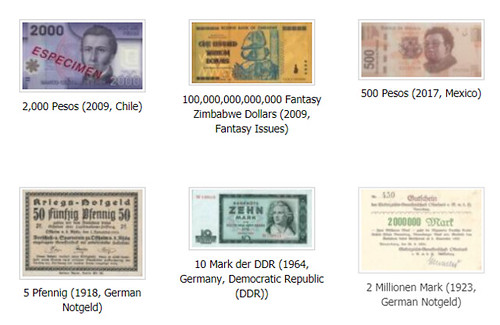
Kavan Ratnatunga writes:
I thought I would write a few thoughts about Aidan Work's suggestion for a banknote catalogue. I have seen such suggestions even within the International Bank Note Society (IBNS) forum. https://colnect.com/en/banknotes has posted over 100,000 banknotes and claims to serve 20,000 banknote collectors. https://colnect.com/en/coins has over 140,000 coins and claims to serve 35,000 coin collectors.
I have found colnect.com a useful resource and I helped to clean some the errors out of the Ceylon/Sri Lanka sections as I have helped with the Standard Catalog of World Paper Money and The Banknote Book. However, I have been able to put a lot more detail in my own websites at lakdiva.org which is not practical for a global site.
Colnect is a community-based platform, so why not use it rather than start yet another platform? I agree it has it's problems, but it seems to have attracted many and will get better only if more serious numismatists guide its development.
I was not familiar with this site. It covers a wide range of collectibles in addition to coins and paper money, -Editor
To read the earlier E-Sylum article, see:
BANKNOTE CATALOG WEB SITE PROPOSED (https://www.coinbooks.org/v22/esylum_v22n41a13.html)
Some Musings on "In God We Trust"
Gil Parsons writes:
We must not forget the call of the gold-bugs: "Ingot we trust". Or, the sign which appeared several years ago atop a merchant's counter: "In God we Trust--All others pay cash". But, most of all, in celebration of the autumn season, the upcoming November (would have been 97th) birthday of Charles Schulz, and the legions of followers of Peanuts' Great Pumpkin: "In Gourd we Trust"...
To read the earlier E-Sylum article, see:
NEW BOOK: IN GOD WE TRUST (https://www.coinbooks.org/v22/esylum_v22n41a04.html)
Electrotype of the 1804 Restrike Cent Whereabouts Sought
Craig Sholley writes:
I collect electros and am interested in the 1804 Restrike electrotype noted by David Lange. If anyone knows who owns it please ask them to get in touch with me.
Can anyone help? -Editor
To read the earlier E-Sylum article, see:
NOTES FROM E-SYLUM READERS: OCTOBER 13, 2019 : Electrotype of the 1804 Restrike Cent
(https://www.coinbooks.org/v22/esylum_v22n41a11.html)
The French Banknotes Web Site
Martin Kaplan shared these interesting articles from Dave Mills' French banknotes site. Thanks. -Editor
Introduction to Collecting Banknotes
 Collecting money. It always seems like some sort of paradox to pay money for other money, often money that can't be spent. But many of us do it, and it makes for a
wonderful hobby. Whether you see banknotes as pieces of art, a part of history, or as financial instruments, there is plenty to keep you busy (and virtually bankrupt) for a long
time.
Collecting money. It always seems like some sort of paradox to pay money for other money, often money that can't be spent. But many of us do it, and it makes for a
wonderful hobby. Whether you see banknotes as pieces of art, a part of history, or as financial instruments, there is plenty to keep you busy (and virtually bankrupt) for a long
time.
This article is a summary of the key questions a new collector may have regarding the hobby.
To read the complete article, see:
Introduction to Collecting Banknotes (http://www.frenchbanknotes.com/articles/collecting.php)
The Creation of a French Banknote

It is quite a project to create finished banknotes, ready for distribution. I have laid out the general steps involved, from artist's sketches through to finished product, with examples (where I have them!) at various stages of the process.
To read the complete article, see:
The Creation of a French Banknote (http://www.frenchbanknotes.com/articles/create.php)

VOCABULARY TERM: FINISH AND FINISHING, PART ONE
Dick Johnson submitted this important but lengthy entry from his Encyclopedia of Coin and Medal Terminology. Thanks! It's a fascinating look behinds the scenes of a minting operation. Here's Part One. -Editor
Finish and Finishing. Any process that is performed to a medallic item (coins have no applied finish) after it is struck or cast; including antiquing, patinating, enameling, plating, fabricating, lacquering, edge stamping, mounting, other. At a plant that manufactures medals, other than the pressroom, the finishing department is the second largest department. Every struck piece, other than coin finish and proof surface, must pass through this finishing department for a number of processes to be applied to each piece, giving every medallic item its final color, appearance, protection and, often, its mounting.
The finishing department receives all the items in their final physical form, all the actions of the pressroom must be completed, all striking and trimming. The medals at this stage are called raw medals, they are completely struck up, all the design and all the lettering that is in the die or mold must be on every piece (some edgelettering or inscribing notwithstanding, these can be applied later). The finishing department must then perform their functions to transform those raw medals into works of medallic art with a most attractive surface that is to be protected for decades or centuries of their possible existence.
There is a very large metal finishing industry for processing most every manufactured metal object. However, the finishing procedures employed for medallic items have been adapted from this industry but occupy only a very small part of its technology, concentrating for the most part on finishes for bronze and silver objects.
Finishing department foreman. The foreman of the finishing department must be a craftsman with knowledge of metallurgy, chemistry, electrolysis and physics. He must be able to take a raw medal – fully struck up with every step of the pressroom completed – and transform that raw medal into a completed work of medallic art. He must have artistic knowledge as well and an aesthetic sense of what he is doing. He should be able to create any finish on a medal that he is called upon to produce (except, of course, coin finish or proof surface, neither of which receive any finishing).
The foreman must oversee every possible step of that medallic item through his department: its proper patina or other finish, its enameling (in proper color, if required), its electroplating (as goldplating or silverplating, if necessary), its fabrication (bringing several parts together if needed), its lacquering (for almost every piece) and complete the item with its suspension or mounting. Then pass this completed medallic masterpiece on to inspectors who will search for any misdeed of his department or imperfection of the piece before it is approved, packaged and prepared for shipment.
First step: abrasive blasting. The usual first step for most every item in the finishing department is to abrasive blast the raw medal. This creates a roughness on the surface, microscopic craters, called cups, cover the entire surface. They are called cups because they can hold liquid. A number of the steps to follow will use liquid to color, to antique, or patina the metal surface.
The abrasive can be any of several kinds, sand, pumice or glass beads. Originally a fine grain sand was used and the process was called sandblasting. Modern technology is able to create glass beads in an even finer grit, so this abrasive has replaced sand. Medals are laid flat on a large rotating tray within an enclosed hood. Nozzles pelt the exposed surface of the medals with the abrasive under pressure.
Impacting the medal's surface with thousands of microscopic cups per square inch, the abrasive breaks up the smooth surface created by the die in the pressroom. The tiny grains fall off the medal and pass through holes in the rotating tray to a receptacle below where the abrasive is recycled to be used again by the nozzles above. All effort is made to contain the abrasive within the confines of the machine as it is used over again.
The color of the medals change most dramatically in this step. Raw medals are usually bright: bronze is usually bright red like a shinny penny, silver a light reflective gray. The abrasive is usually matte gray, and the surface of the medals take on this matte gray appearance. The pelting affects only the exposed side only, so the medals have to be turned over by hand and allowed to rotate under the nozzles for the opposite side to be abrasive blasted as well. It is not necessary to sandblast the edge, even on a thick medal.
The treated medals are picked out by hand, the excess abrasive is shaken off, then placed in wire baskets, perhaps a dozen at a time. The medals are placed vertically in a long handle wire basket in such a way that both sides are exposed. The medals are prepared now for either an antique finish (by oxidation and relieving), or a patina finish. The surface is now suitable for treating with a liquid (in the microscopic cups).
Oxidation (actually a sulphatization). The wire basket containing the abrasive-blasted medals are then immersed in a bucket containing the darkening chemical (as ammonium sulfide) for the next step of antiquing. The wire basket is rotated by hand holding the handle, swishing it around submerged in the liquid so it comes in contact with as much of every medal's surface as possible.
Time is quite critical. The chemical acts quickly. The medals turn black almost immediately. The sulfur from the ammonium sulfide combines with the surface molecules of the bronze or silver to form copper sulfide or silver sulfide. The metal reacts instantly with the sulfide, the process of sulphatization (unfortunately it is called oxidation, which implies oxygen, but the reactive ingredient is the sulphur, no oxygen is required). This chemical action occurs in from five to ten seconds.
The medals are again changed in color (as well as their surface changed chemically). From gray abrasive blasted, they are now black. The operator can control the blackening somewhat. In the first few seconds bronze turns dark brown, then black (silver turns black immediately). The longer the medals are left in the solution, the darker (blacker) they become, reaching a maximum blackness in the ten seconds.
The wire basket containing the medals is removed from the bucket containing the darkener and immediately immersed in water. This stops the chemical action. Then fresh water is run over the medals to wash away any remaining darkening chemical, and any residual abrasive. The wet medals are removed from the wire basket, placed in a tote box and moved to the relieving station.
Looking for the meaning of a numismatic word, or the description of a term? Try the Newman Numismatic Portal's Numismatic Dictionary at: https://nnp.wustl.edu/library/dictionary
Or if you would like a printed copy of the complete Encyclopedia, it is available. There are 1,854 terms, on 678 pages, in The Encyclopedia of Coin and Medal Technology. Even running two a week would require more than 19 years to publish them all. If you would like an advance draft of this vital reference work it may be obtained from the author for your check of $50 sent postpaid. Dick Johnson, 139 Thompson Drive, Torrington, CT 06790.
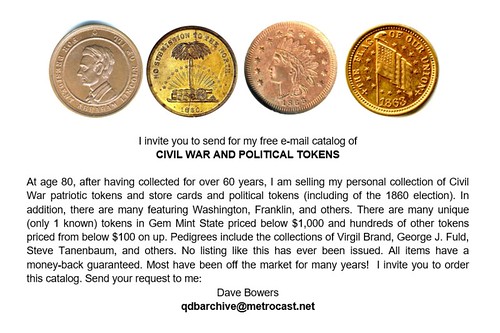
REVEREND FATHER GIUSEPPE MARIA FINOTTI (1817-1879)
 Reverend Father Giuseppe "Joseph" Maria Finotti (1817-1879), Society of Jesus, was born at Ferrara, Emilia-Romagna, Italy, 21 September, 1817, the second child
of seven children born to Francesco Maria Finotti (1779-1857), and Rosina Tassinari (1783-1837).
Reverend Father Giuseppe "Joseph" Maria Finotti (1817-1879), Society of Jesus, was born at Ferrara, Emilia-Romagna, Italy, 21 September, 1817, the second child
of seven children born to Francesco Maria Finotti (1779-1857), and Rosina Tassinari (1783-1837).
In 1833, the young Finotti was received into the Society of Jesus in Rome, and for several years taught and studied in the colleges of the order in Italy.
He was one of the recruits whom Fr. Ryder, in 1845, brought from Europe to labor in the Maryland Province. After his ordination at Georgetown, D. C., Fr. Finotti was appointed pastor of St. Mary's Church, Alexandria, Virginia, and given charge of outlying missions in Maryland and Virginia. In 1852, he left the Society of Jesus and went to Boston arriving November 12, 1853. For many years he held the position of literary editor of The Pilot, America's oldest Catholic newspaper and the official newspaper of the Archdiocese of Boston while acting as pastor of Brookline and later of Arlington, Massachusetts. The last few years of his life he spent in the West, becoming, in 1877, pastor of Central City, Colorado, and retaining charge of that parish up to the time of his death.
Fr. Finotti was a great book lover, giving much time to literary pursuits and displaying special interest in the Catholic literary history of America. Among his literary productions are, "Month of Mary", 1853, which reached a sale of 50,000 copies; "Life of Blessed Paul of the Cross", 1860; "Diary of a Soldier", 1861; "The French Zouave", 1863; "Herman the Pianist", 1863; "Works of the Rev. Arthur O'Leary"; "Life of Blessed Peter Claver", etc. Most of these publications were translated or edited by him.
His best-known work, never completed, is his "Bibliographica Catholica Americana" which took years of study and care. It was intended to be a catalogue of all the Catholic books published in the United States, with notices of their authors, and epitomes of their contents. The first part, which brings the list down to 1820 inclusive, was published in 1872; the second volume, which was to include the works of Catholic writers from 1821 to 1875, was never finished, though much of the material for it had been industriously gathered from all available sources. His last literary effort, which he did not live to see published, entitled "The Mystery of Wizard Clip" (Baltimore, 1879), is a story of preternatural occurrences at Smithfield, West Virginia, which is partly told in the life of Father Gilitzin.
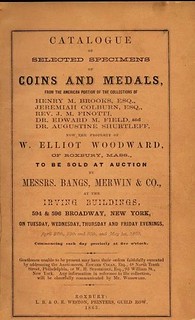 His numismatic pursuits led him to become a member of the Boston Numismatic Society. Fr. Finotti amassed a very fine collection of U. S. proof coins and colonials. He
owned one of the four silver proof 1827 quarters struck at the U. S. Mint in Philadelphia for J. J. Mickley. This coin passed from W. E. Woodward as he published in the
description of lot 244, of the Heman Ely sale of January 8-10, 1884, to George F. Seavey who sold it at auction through W. H. Strobridge at Bangs on September 22, 1863 for
$225.
His numismatic pursuits led him to become a member of the Boston Numismatic Society. Fr. Finotti amassed a very fine collection of U. S. proof coins and colonials. He
owned one of the four silver proof 1827 quarters struck at the U. S. Mint in Philadelphia for J. J. Mickley. This coin passed from W. E. Woodward as he published in the
description of lot 244, of the Heman Ely sale of January 8-10, 1884, to George F. Seavey who sold it at auction through W. H. Strobridge at Bangs on September 22, 1863 for
$225.
Finotti began to sell his coins at auction in 1860. Another of his collections consisting of 1908 lots was sold by Woodward on November 11-14, 1862, and was Woodward’s first Bangs, Merwin & Co., New York coin sale. The New York Times cites the Finotti sale of November 1862 : “NUMISMATIC SALE. Messrs. BANGS, MERWIN Co. offered for sale by auction, on Tuesday evening, a large number of old coins. The attendance of purchasers was large and the bidding spirited. The catalogue embraced the American portion of the Finotti collection of coins and medals, now the property ...”
 Fr. Finotti died at Central City, Gilpin County, Colorado, 10 January, 1879. He is buried at Mount Olivet Cemetery, Wheat Ridge, Jefferson County, Colorado.
Fr. Finotti died at Central City, Gilpin County, Colorado, 10 January, 1879. He is buried at Mount Olivet Cemetery, Wheat Ridge, Jefferson County, Colorado.
The New York Times cites the Finotti sale of October 1879, in an article on book sales that attained $10,000.00 or more.
To read the complete article, see:
FINOTTI, S.J., Rev. GIUSEPPE MARIA
(https://sites.google.com/a/numismaticmall.com/
www/numismaticmall-com/finotti-s-j-rev-giuseppe-maria)
The entire inventory of the Lupia Numismatic Library is for sale. Individual items will be available before the remaining archives are broken up into parcels sold at philatelic auctions in the U. S. and Hong Kong. Check NumismaticMall.com frequently as dozens of new items with estimates will be posted daily until everything is sold.
All inquiries will be given prompt and courteous attention. Write to: john@numismaticmall.com .

HARVEY STACK'S NUMISMATIC FAMILY, PART 55
The latest article in Harvey Stack's blog series focuses on the 1970 Gaston DiBello collectoin sale. -Editor

From the very beginning of 1970, Stack's was awarded numerous collections for auction, so much so that we were able to have 10 different auctions in the 12-month period. Four of the collections we offered in 1970 were of great importance, as they had rare coins, extremely choice coins and offered the opportunity in each case to find items that were not often available. These sale names would become pedigrees that would be attached to the coins and follow them to future collection. The other six sales offered vast quantities of choice and rare coins as well, some that were seldom seen at auction or scarcely available over the counter from dealers.
In May 1970 during the annual New York Numismatic Convention, we were pleased to offer the United States coins gathered by Gaston DiBello. We had sold the world gold coins collected by this avid collector in 1969. The United States coin collection contained so many rare and choice coins, that I cannot list them all. It contained 1,430 lots of U.S. gold, exciting and rare patterns, and a select group of silver pieces. He had minor sets from cents through five-cent pieces, as well as dimes, quarters half dollars and dollars. There was something for everyone!
U.S PATTERNS: Almost 250 covering all denominations in various metals from the small cent to Barber's $50 gold struck in copper, with most of the rarest half dollar and dollar patterns ever seen in one collection.
GOLD DOLLARS: Mostly Mint State, with many from the George Walton Collection .
QUARTER EAGLES ($2.50 GOLD ): A comprehensive collection from 1796 onward, featuring most early dates and rarities, most Charlotte and Dahlonega pieces and a number of Proofs.
THREE DOLLARS GOLD: A comprehensive collection, with virtually all of the dates from 1876 in glistening Proof.
FOUR DOLLAR GOLD STELLAS: Both the Flowing Hair and Coiled Hair types of 1879.
HALF EAGLES ($5 GOLD): An extensive collection, especially rich in early dates before 1834, with numerous rare later dates.
EAGLES ($10 GOLD): An extensive offering from 1795 to 1933, with most of the early dates, rare dates throughout the Liberty Head series, and a great number of Proofs. In the Indian Head series there was the 1907 Wire Edge and Rolled Edge in Mint State, plus a pair of 1907 patterns (attributed as Saint-Gaudens original strikes) both in Matte Proof.
DOUBLE EAGLES ($20 GOLD): Here again Gaston was very selective and favored, when he could, Proof Gold and rare Mint State examples. In Proof he had 1862, 1863, 1869, 1870, 1887, 1888, 1889. 1897, 1901, 1905, 1907, 1907 Saint-Gaudens flat edge, 1909 and most of the rare dates in the late 1920s and early 1930s. He no doubt would have bid on the 1933 if it was not withdrawn from the Farouk Sale.
PIONEER AND TERRITORIAL GOLD: Almost 50 different examples, including Bechtler, Assay Office of Gold, Wass, Molitor & Co., Kellogg, Mormon, and Clark, Gruber & Co. Among these were eight $50 gold pieces.
The 1970 Gaston DiBello Collection presented a very important opportunity for collectors of that generation to acquire many of the coins from famous old collections, including the massive King Farouk Collection.
Three other important , pedigree-type collections included the Frederic Knoblach Collection of Greek and Roman coins, the Famous ALTO Collection of U.S. gold, silver and copper coins (formed over 75 years before it was offered for sale), noteworthy duplicates including hundreds of Massachusetts silver pieces from the Massachusetts Historical Society. The last collection was started by the famous Adams family of colonial times, worked on by a number of descendants, and featured a wealth of early American Colonial coins.
These and the other estate and other collections and items we were able to present at auction made 1970 a very important year, not just for Stack's but for the buyers who were able to bid on items that were scarcely available. The arrival of these pieces on the market, some of which had been in collections for decades or even centuries, provided an opportunity not only for acquisition, but also for research and study. It was a great time for numismatics.
To read the complete article, see:
Harvey Stack Remembers: Growing up in a Numismatic Family, Part 55
(https://www.stacksbowers.com/News/Pages/Blogs.aspx?ArticleID=harvey-stack-part-55)
To read the complete article, see:
HARVEY STACK'S NUMISMATIC FAMILY, PART 54 (https://www.coinbooks.org/v22/esylum_v22n40a17.html)
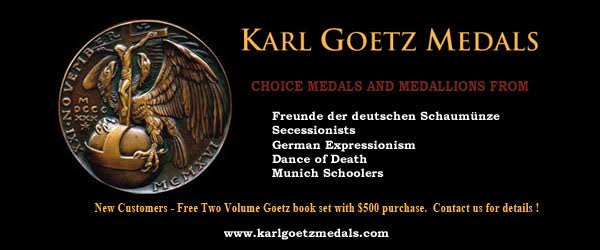
NATIVE AMERICAN COIN FIGURE PERATROVICH
We didn't discuss the recent launch ceremony for the Native American $1 Coin featuring Civil Rights pioneer Elizabeth Peratrovich. This article interviews the author of a book on Peratrovich's life. -Editor
 Boochever wrote “Fighter in Velvet Gloves”, a book about the life of Elizabeth Peratrovich. The Kuskokwim Consortium Library hosted the author book talk Friday,
September 27th, 2019 for Bethel residents.
Boochever wrote “Fighter in Velvet Gloves”, a book about the life of Elizabeth Peratrovich. The Kuskokwim Consortium Library hosted the author book talk Friday,
September 27th, 2019 for Bethel residents.
Boochever introduced herself in the Tlingit language. She said that there are 24 sounds in Tlingit that are not used in English.
She told the audience that her teacher friends suggested that she write a book about Elizabeth Peratrovich. At the time, Boochever didn’t think that she would be the one to accomplish this.
She said that she found out about Roy Peratrovich Jr. through her niece who knew of some work that Roy was involved in. Roy, who is a certified engineer, is also an esteemed Tlingit artist. At 85 years old he is the only living child of Elizabeth and Roy Peratrovich Sr.
So Boochever wrote Roy a letter and he wrote her back. And that is how the idea of writing the book came about, the book about Elizabeth Wannamaker Peratrovich.
Fighter in Velvet Gloves was officially released on February 16, 2019. February 16, 1945 was the date that the anti-discrimination law was signed by the Alaska Territorial Legislature.
Boochever spoke about how Ernst Gruening was the Peratrovich’s “greatest ally” in their fight against racial anti-discrimination. Gruening was the Alaska Territorial Governor from 1939 to 1953 and he was Jewish. He knew what discrimination felt like, she said. Gruening had even asked businesses to take down the loathsome “No Natives” signs, but they said no, said Boochever. The Peratroviches asked him to introduce the Anti-Discrimination Act.
“Only by law, by bills,” said Boochever. “Gruening asked her to fly around the state to advocate for native civil rights.”
So she did. The Peratroviches found another ally in Sheldon B. “Shell” Simmons, a bush pilot. He agreed to take Elizabeth to communities whenever he had a seat available so that she could talk to people. So she flew to many places.
On October 5th, 2019, United States Mint (Mint) Chief Administrative Officer Patrick Hernandez unveiled the reverse (tails) design for the 2020 Native American $1 Coin featuring Elizabeth Peratrovich during the Alaska Native Brothers and Alaska Native Sisters Convention at Alaska Pacific University.
“This coin will be a lasting tribute to Elizabeth Peratrovich and her relentless efforts to tear down the wall of discrimination against Alaskan Natives,” said Mr. Hernandez. “We will proudly produce this coin that honors her bravery and determination.”
I grew up in Pittsburgh and I've never forgotten something I saw as a kid on a vacation trip to the Washington, D.C. area. It was the late 1960s. At a rest stop in Maryland, over a water fountain, was a sign that said "White Only". I stared at it like it came from Mars, unable to fathom why it existed. -Editor
To read the complete article, see:
Elizabeth Peratrovich biography author visits Bethel on book tour
(https://deltadiscovery.com/elizabeth-peratrovich-biography-author-visits-bethel-on-book-tour/)
Her portrait will appear on the reverse (tails) side of a $1 coin, accompanied by the symbol of the Tlingit Raven moiety, or descent group, of which she was a member. The bottom of the design is framed by the inscription, "ANTI-DISCRIMINATION LAW OF 1945."
Under the Native American $1 Coin Act, the US Mint began minting $1 coins whose designs celebrate the vital contributions to US history and development made by Native American individuals and tribes. The first coin of the series, produced in 2000, highlighted Sacagawea, a Shoshone woman known for her guidance of the historic Lewis and Clark expedition. Other years have featured designs to commemorate the continental spread of the horse, Mohawk iron workers' contribution to building New York City skyscrapers, and the pioneering achievements of Native Americans in the US Space Program.
To read the complete article, see:
Alaska Native and civil rights icon Elizabeth Peratrovich to be featured on $1
coin (https://www.cnn.com/2019/10/07/us/elizabeth-peratrovich-alaska-native-trnd/index.html)
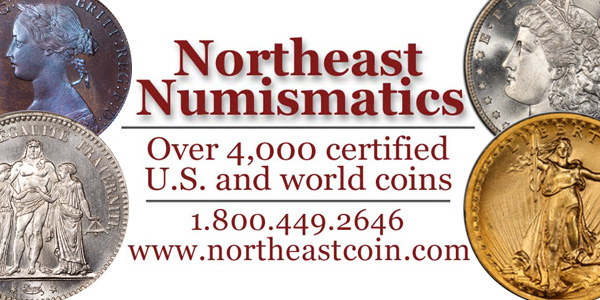
GARRETT: COIN TONING A MATTER OF TASTE
Jeff Garrett published a nice article on toned coins on his NGC blog. Here's an excerpt. See the complete article online for great photos and more. -Editor
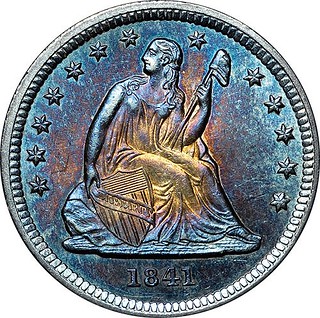
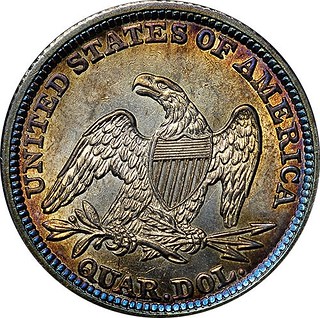
Someone once said “beauty is in the eye of the beholder.” This sublime statement has become a reality in the rare coin business. Toned coins are now extremely collectible and highly sought after.
When I started buying and selling rare coins a few decades ago, toned coins were certainly a curiosity, but the demand for them was lukewarm at best. As a matter of fact, most collectors wanted their rare coins to be frosty white. Any coin with toning was soon slated for a bath in Jewel Luster, the coin dip of choice for most collectors.
(Jewel Luster has a mild blue dye added to it to discourage people from exposing their skin to the chemicals. Believe me, there was no shortage of Smurf-fingered coin dealers in the 1970s and 1980s!)
Much has changed over the years. Collectors now have a deep appreciation for coins with attractive, original toning. What constitutes attractive is the question that many have different opinions about.
Classifying silver coins based on tone
I have mentioned in previous articles that silver coins have three basic appearances. About 40-50% of vintage coins (those over 50 years old) seen on the market today are frosty white or mostly so. These are coins that have probably been conserved at one time, or were found in rolls or bags and not exposed sulfur or other contaminants. A large number of Morgan silver dollars fall in this category.
Another 40-50% of silver coins have toning that is not considered attractive, generally ranging from light brown to an almost black appearance. Often, these are the coins that sell for significant discounts when offered for sale. The coins may technically grade quite high, but many collectors do not like the aesthetic appeal of the pieces.
You might be wondering why, if these coins sell for a discount because of the unattractive toning, someone does not have them conserved. That is a great question! The problem is that not all coins are candidates for conservation.
Indeed, many coins with deep or uneven toning will look terrible if cleaned, which is why conservation should be left to the hands of experts. I can testify to the truth of this statement by telling you that I have attempted to improve the appearance of a coin, only to be horrified by the results! My “school of hard knocks” collection of coins contains a Monroe half dollar that cost me over $4,000 in the late 1980s. A train-wreck dip resulted in a coin that would be hard to sell for $200 today.
Finally, we have the small percentage of coins found with what can be deemed as attractive toning. I estimate that less than 10% of the silver coins on the market fall into this category.
Here’s looking at you, coin
Just as what constitutes attractive toning is subjective, collecting toned coins is a matter of taste. Generally, collectors today are much more willing to pay higher prices for coins with great eye appeal. This mantra is taken to extremes when a truly beautiful coin comes to market.
I have stated before that if I come across a stunning coin, I almost always place the coin in auction. It seems that buyers for these coins sometimes have a better imagination than I do! The recent sale of a fairly common date Mercury dime for over $300,000 proves this point very clearly.
Eye appeal has become a very important element for pricing rare coins, and toning is just one of the many important factors that must be considered. It is actually quite refreshing to see coins that sell more as pieces of art, rather than in relation to a Greysheet bid or retail price guide.
One final piece of advice: Buy certified coins to ensure they have not been artificially toned or enhanced. The recent auction prices have already spurred deceptive individuals to create pieces with rainbow toning to cash in on the current craze for beautifully toned coins. For this reason, it is necessary to educate yourself to understand the appearance of natural toning. A study of toned coins sold at auction will give you some idea on how to value one of the most enigmatic segments of the rare coin market.
To read the complete article, see:
Jeff Garrett: A Matter of Taste (https://www.ngccoin.com/news/article/7813/)

2019 IACA COIN AWARD WINNERS ANNOUNCED
Currency News published the winners of the International Association of Currency Affairs (IACA) Excellence in Currency 2019 Coin Awards. -Editor
Congratulations to the IACA Award Winners, which were announced in Rome at The Coin Conference on 15 October 2019. The IACA Excellence in Currency Awards promote and recognise excellence in banknote and coin production, processing, management and distribution. In keeping with IACA’s mission of making cash the best that it can be, any organisation or individual involved in the currency industry, as well as issuing authorities, commercial banks and enforcement agencies can be eligible for an award.
See the award winning coins and projects below:
BEST NEW CIRCULATING COIN OR COIN SERIES
 Finalists
Finalists
Bangko Sentral ng Pilipinas
New Generation Currency Coin Series
Comprising 10 piso, 5 piso, 1 piso, 25 sentimo, 5 sentimo and 1 sentimo coins
Central Bank of Mauritania / La Monnaie de Paris
20 Ouguiya Coin
The world’s first circulating tricolour coin
United States Mint
“W” Quarter-Dollar Circulating Coin
As part of National Coin Week, the United States Mint launched a limited amount of quarter-dollars with a ‘W’ mint mark into circulation.
Winner
Central Bank of Mauritania / La Monnaie de Paris
20 Ouguiya – Tricolor Circulating Coin
BEST PUBLIC EDUCATION PROGRAM, WEBSITE OR APP
 Finalists
Finalists
Reserve Bank of New Zealand
Armistice Day Coin Public Awareness Campaign
An innovative campaign for Armistice Day coin which invited people to ‘SPEND IT. KEEP IT. REMEMBER.’
Bangko Sentral ng Pilipinas
Coin-Ed Program for New Generation Series
Utilised multiple communication channels to increase public awareness and promote engagement in the recirculation and proper use of the coins.
United States Mint
HIP Pocket Change Website
Offering kids a variety of educational games to play or to be incorporated into lesson plans
Winner
Reserve Bank of New Zealand
Armistice Day Coin Public Awareness Campaign
BEST NEW COIN INNOVATION
 Finalists
Finalists
Royal Canadian Mint
Tri-Metal Security Test Token
Three metallic pieces, with a novel geometry resulting in a coin with two different metals on each side
The Singapore Mint
Coin Visual Inspection Machine
Can differentiate coins of the same specifications, but of different designs/features/condition/surface finishing
The Singapore Mint
Coin Recirculation via Integrated Coin Processing and Management
The promotion of coin recirculation via self-service coin deposit machines, recycling, sorting and re-issue
Winner
Royal Canadian Mint
Tri-Metal Security Token
BEST NEW COMMEMORATIVE OR TEST COIN
 Finalists
Finalists
Reserve Bank of New Zealand
Armistice Day Coin
Marking the centenary of World War 1, the coin’s standout feature is the use of colour.
South African Reserve Bank
Nelson Mandela R5 Commemorative Coin
An opportunity to explore new features, including the latent image on the reverse of the coin
People’s Bank of China / China Banknote Printing and Minting Corporation
High-Speed Railway Commemorative Circulating Coin
Produced with advanced techniques and incorporates a range of new features
Winner
Reserve Bank of New Zealand
Armistice Day Coin
To read the complete article, see:
IACA Excellence in Currency Coin Award Winners Announced in Rome
(https://www.reconnaissance.net/news/iaca-award-winners-2019/)
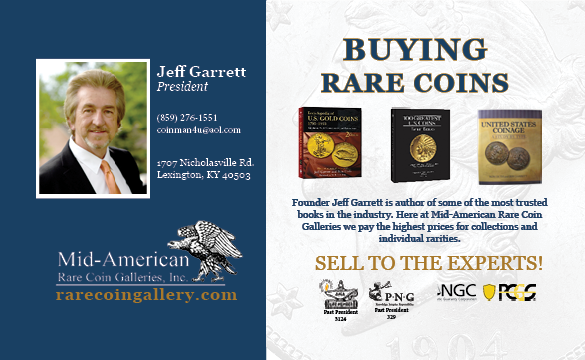
SELECTED CORONATION MEDALS
E-Sylum sponsor Hedley Betts deals in medals. Here are a few items that caught my eye in his new offering of Coronation medals. -Editor
OFFICIAL CORONATION MEDALS OF GREAT BRITAIN The tradition of issuing official medals for the coronations of British kings and queens began in 1603 with the coronation of James I. The earliest medals were intended to be thrown among a crowd (a practice later abandoned due to unseemly scrambles to grab a medal). The practice of throwing medals into a crowd necessitated keeping medals relatively small in size (unofficial medals were typically larger). Since dies tended to break with fair frequency, new dies varying in minor details were created. Several of the examples of the medals listed here represent some of the varieties. Medals were struck in silver and gold and small numbers were struck in base metal for some of the earliest coronations. Base metal imitations of the coronation medals of George I, George II and George III were made for sale to the public.
Beginning with the coronation of George IV it became the practice to strike medals in bronze for sale to the public. Starting with the coronation of Edward VII medals were issued in two sizes. There were no official medals issued for the coronation of Elizabeth II.
1626, OFFICIAL CORONATION MEDAL OF CHARLES I

1626, England. OFFICIAL CORONATION MEDAL OF CHARLES I. By Nicholas Briot. Silver 30mm. OBVERSE: Bust of Charles I, crowned in a ruff, ermine robes, collar and badge of the Garter, facing right. LEGEND: CAROLVS . I . D . G . MAG . BRITAN . FRAN . ET . HIB . REX . (Charles I, by the grace of God king, of Great Britain, France and Ireland). REVERSE: An arm, extending from a cloud, holding a sword. LEGEND: DONEC . PAX . REDITTA . TERRIS. (Until peace is restored to the earth). Eimer 106, MI I 243/10, plate XX/1, Wollaston 2. Light chasing in the fields. $950
1661, OFFICIAL CORONATION MEDAL OF CHARLES II
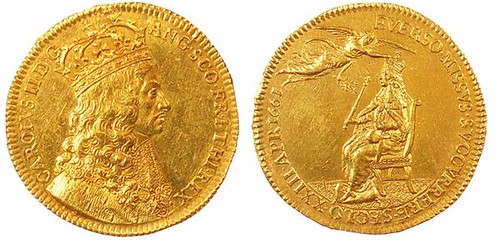
1661, England. OFFICIAL MEDAL OF THE ENGLISH CORONATION OF CHARLES II. By Thomas Simon. Gold 29mm. Obv: Crowned bust of Charles II in ermine robes, collar and George of the Garter. Legend: CAROLVS . II . D . G . ANG . SCO . FR . ET . HI . REX. (Charles II, by the grace of God, King of England, Scotland, France and Ireland). Rev: Peace hovering over the enthroned king and placing a crown on his head. Legend: EVERSO . MISSVS . SVCCVRRERE . SECLO . XXIII . APR . 1661. (Sent to support a fallen age, 23 April, 1661. - based on Virgil Georgis 1.500). MI I 472/76, plate XLV/7, Eimer 219, Fearon 112.1, Wollaston 5. $6,000
1689, CORONATION MEDAL OF WILLIAM AND MARY

1689, England. OFFICIAL CORONATION MEDAL OF WILLIAM AND MARY. By John Roettier. Silver 35mm. Obv: Conjoined, draped busts, left. Leg: GVLIELMVS . ET . MARIA . REX . ET . REGINA. (William and Mary, king and queen). Rev: Jove hurling thunder at Phaeton, falling from his chariot, the earth in flames. Leg: NE TOTVS ABSVMATVR. (That is may not all be consumed). Exergue: INAVGVRAT . II . AP . 1689 (Crowned, 11 April, 1689). Variety in bold relief and varying in other minor details. Eimer 312, MI 662/5, plate LXX/10, Wollaston viii., Fearon 140. $650
Beautiful and historic pieces - nice. Check out the complete selection. -Editor
To view the complete medal selection, see:
Coronation Medals (https://www.mcssl.com/store/8596432/coronation-medals)
THE BOOK BAZARRE
WAYNE'S NUMISMATIC DIARY: OCTOBER 20, 2019
Tuesday October 15, 2019 was the meeting night of my Northern Virginia numismatic social group, Nummis Nova. Joe Esposito was our host, and he'd chosen an Italian place called Villa Bella in Burke, VA. I was among the last to arrive and settled into a chair between Joe and Robert Hoppensteadt, straight across from guest Jonas Denenberg. Other attendees included Tom Kays, Eric Schena, Dave Schenkman, Mike Packard, Jon Radel, Steve Bishop, and Julian Leidman.
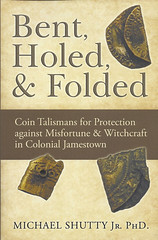 We had a back room all to ourselves, and that was nice. Appetizers would soon be hitting the table and bread and olive oil were already distributed. I gave Tom Kays some
duplicate or unneeded books from my library as donations to the Fairfax County Coin CLub's kid events. My only display items were a copy of Mike Shutty's new book Bent,
Holed & Folded, and the Joe Redner One Vote Note by J.S.G. Boggs and Tom Hipschen. Both items had been discussed before in The E-Sylum.
We had a back room all to ourselves, and that was nice. Appetizers would soon be hitting the table and bread and olive oil were already distributed. I gave Tom Kays some
duplicate or unneeded books from my library as donations to the Fairfax County Coin CLub's kid events. My only display items were a copy of Mike Shutty's new book Bent,
Holed & Folded, and the Joe Redner One Vote Note by J.S.G. Boggs and Tom Hipschen. Both items had been discussed before in The E-Sylum.
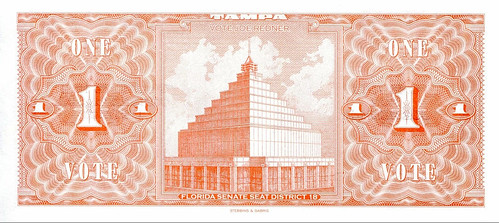
Robert's Marcus Aurelius

Robert Hoppensteadt collects ancient coins with images of buildings. He showed us pictures of a very rare coin he'd purchased that day in a Gorny and Mosch auction. Here's the lot description:
Decapolis, Gadara. Marcus Aurelius and Lucius Verus, 161 - 169 AD (25.19g). 161 ad. Mzst. Qais. Vs .: ????????O??S ???O?????S ??? ?????S, laurel busts of Marcus Aurelius l. and Lucius Verus r. facing each other. Rev .: ?? G???? [O?] / ? ? ? G / ? S??, four-columned temple front, enthroned statue of Zeus with Nike and scepter, in the gable dating ??C. Spijkerman 46f .; RPC IV online 6673. Very rare, four examples in RPC.
Ex Collection Shlomo Moussaieff, London. Acquired between 1948 and 1980s.
Robert adds:
"The auction did not have diameter listed but one in RPC from the same obverse dies was 31mm and this looks to be a bit bigger with full legends."
Great coin. Robert explained that the Decapolis was a group of ten eastern cities (including Damascus) that were chiefly inhabited by Greeks and maintained a Greek character.
Schenkman's Tokens
Dave Schenkman can usually be counted on for some interesting material, particularly tokens. Here are two pieces he brought that night.
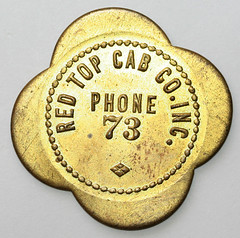
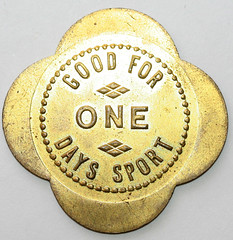
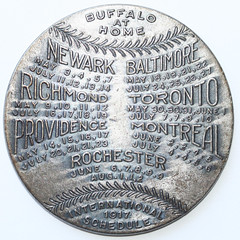

Dave writes:
The Red Top Cab Co. token is very unusual; I’d love to know where the company was located, and how it was used. It is brass, 45mm.
I’ve been cataloging sports schedule tokens for many years. Most of those issued prior to 1950 are rare, and this one is no exception. Buffalo was a member of the class AA International League, and the token has its 1917 home schedule. It is nickel plated brass, 39mm.
The Coin Banjo
Outside of numismatics, Dave is a player and dealer in banjos. We discussed this tiny banjo I'd come across in the Newman Numismatic Portal photo gallery of the Eclectic
Numismatic Treasure (Miscellaneous section). Very cool item.

To see the complete NNP item, see:
Coin Banjo (https://nnp.wustl.edu/library/imagedetail/566649?col=511837)
Buy it Now for $1,250,000.00
Dave also remarked on this eBay lot with a wild price tag: "I have a feeling his price is a bit optimistic. I was amazed at the assigned grading also…"
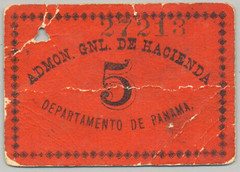 To read the complete lot description, see:
To read the complete lot description, see:
COLOMBIA TREASURY DEPARTMENT DE PANAMA FRENCH CANAL
ADMINISTRATION 5 c 1889 PMG (https://www.ebay.com/itm/COLOMBIA-TREASURY-DEPARTMENT-DE-PANAMA-FRENCH-CANAL-ADMINISTRATION-5-c-1889-PMG/174018914311)
It was another fine night of numismatic fellowship. It was a relatively short drive home for me. leaving time to put away my toys for another day.
To read the earlier E-Sylum articles, see:
THE JOE REDNER POLITICAL NOTE (https://www.coinbooks.org/v22/esylum_v22n38a24.html)
NEW BOOK: BENT, HOLED, & FOLDED (https://www.coinbooks.org/v22/esylum_v22n41a03.html)

HOW THE $4 STELLAS CAME TO BE
Stack’s Bowers Galleries published a general-public press release this week with some interesting background on the creation of the U.S. $4 "Stella" gold patterns. Here's the main text of the release, followed by some more details from the online lot description. The piece is set to be sold November 14, 2019 at the Whitman Baltimore Winter Expo Rarities Night sale. -Editor
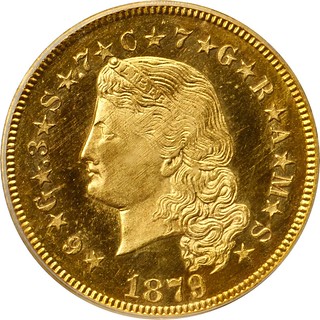
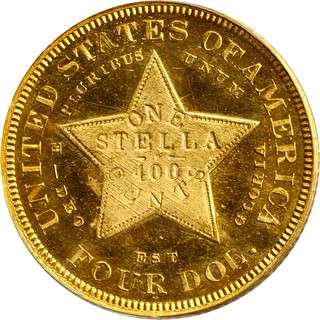
Valued at roughly $200,000, the Gold Stella was intended to be used as a universal coin that was to be exchangeable with any currency throughout the world. It’s weight and precious metals composition were designed to match the Latin Monetary Union, which set a bimetallic gold and silver standard at a fixed ratio of 15-1/2 to 1 and used the Napoleonic franc of 1803 as its basis.
The Latin Monetary Union (LMU) was initially established between Belgium, France, Italy, and Switzerland, but was soon joined by many other continental European nations. Through the Union, one franc would be the same as one lira, peseta, leva, or drachma and easily exchangeable within the member nations. The Union proved to be successful and lasted until its dissolution in 1927. In many ways, the LMU was a precursor to the modern European Union founded in 1957.
At the time of the establishment of the LMU, the United States was still reeling from the devastating effects of the Civil War, as well as the Panic of 1873. Fortunately, the economy proved resilient and by the later 1870s international trade increased at a steady rate. More and more Americans traveled abroad for both business and pleasure and found that the easy convertibility of the various currencies within the LMU made commerce more fluid.
In 1877, Congressman John Kasson of Iowa was appointed by Rutherford Hayes as Envoy Extraordinary and Minister Plenipotentiary to the Austro-Hungarian Empire, where he was exposed to the difficulties in converting American dollars into Austrian florins and back again. When he returned, Kasson used his experiences - as well as influence as past chair of the House Committee on Coinage, Weights, and Measures - and submitted a proposal for a four-dollar coin that would be closer in weight to the Austro-Hungarian 8 florin piece, which was equivalent to the French 20 franc coin. Thus, the $4 Gold Stella was born.
Two designs were prepared, the Flowing Hair design by Charles E. Barber, as here, and the Coiled Hair design by George T. Morgan, both of which became known as Stellas. Recent past Stack’s Bowers Galleries sales of the Flowing Hair and Coiled Hair Stellas garnered $400,000 and $646,000, respectively. Barber's Flowing Hair design was the first selected for production and an estimated 25 - though this may be a few as 10 to 15 - three-piece pattern Proof sets were prepared. These sets were distributed to Congressional leaders who took a liking to the unusual coins. Other government officials who encountered the coin pressed the Mint for more examples. To satisfy the demand, the Mint struck more examples in 1880 but all bearing the 1879 date. The precise number struck remains unclear, ranging from the traditionally quoted figure of 425 pieces to some estimates as high as 800 coins. Despite the interest in the coin, the denomination never received enough Congressional support to proceed with regular full-scale production. The denomination had no exact European counterpart due to the ratio of metals used not precisely matching LMU standards, was an unusual denomination, and seemed to have no real specific commercial use.
In fact, many of the Stellas ended up being used as jewelry pieces and were the center of a scandal when, according to renowned researcher John Dannreuther, a number of them were found being worn by madams in Washington D.C. bordellos.
“The Stella represents an attempt to integrate the world’s money as one,” said Brian Kendrella, President of Stack’s Bowers Galleries. “We still haven’t been able to do this even today but this coin represents the closest we likely ever came.”
Here's some numismatic detail from the lot description. -Editor
Despite the intention to produce the pattern Stellas in goloid as expressed by the obverse legend *6*G*.3*S*.7*C*7*G*R*A*M*S*, the coins were almost certainly produced in the standard alloy of 90% gold and 10% copper, though so far as known no Stella has been subjected to analysis to prove this assertion. On the reverse is the prominent large five-pointed star from which the coin earned its moniker and the denomination expressed three ways: ONE STELLA, 400 CENTS, and FOUR DOL. While most consideration was focused on the $4 gold piece, $20 "Quintuple Stella" patterns were also prepared along with metric silver and goloid dollars.
Stellas were all struck as Proofs, but because many of the remaining coins ended up as pocket pieces or set into jewelry, they often appear as if they have seen very heavy circulation. Many are damaged with filed rims, scratches, and wear commensurate with long service in necklaces. The present coin is a noteworthy exception.
I reached out to John Dannreuther for comments on the bordello reference. -Editor
JD writes:
I thought it was in a contemporary auction catalog, but I reread what I wrote and I said they "reputedly" were given, so evidently I could not find a reference, either!
There are a lot of them that were used as jewelry. In fact, I once bought two coins that had already been used for jewelry (back when they were $7-10K for "damaged" ones). I had an order from a dealer who had a customer that was going to make them into cufflinks!
To read the complete lot description, see:
1879
Four-Dollar Gold Stella. Flowing Hair. Judd-1635, Pollock-1833. Rarity-3. Gold. Reeded Edge.
(https://auctions.stacksbowers.com/lots/view/3-KERPJ/1879-four-dollar-gold-stella-flowing-hair-judd-1635-pollock-1833-rarity-3-gold-reeded-edge-proof-65-cameo-pcgs-cac)

TURNER PAINTING FEATURES ON NEW £20 NOTE
Justin Perrault forwarded this interesting article about the artwork behind the newly re-designed polymer 20 pound notes. Thanks! -Editor
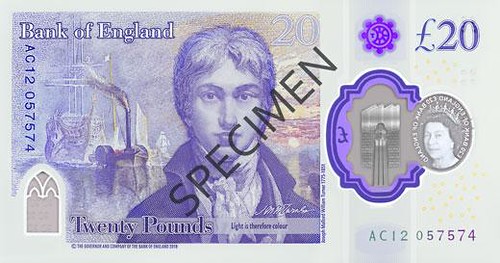
One of England’s greatest painters is to become the country's first-ever fine artist immortalized on a banknote. The Bank of England last week revealed its newly redesigned £20 note, featuring the likeness and work of JMW Turner, one of the country’s most revered artists.
The bill was unveiled at the Turner Contemporary in Margate, a seaside town that figured prominently in Turner’s life. The Turner Contemporary, an arts center named for the painter, as well as the town’s lighthouse, appear on the bill. Tracey Emin, one of Britain’s greatest living artists and a Margate native, was on hand to reveal the bill, which will enter circulation in February 2020.
 The Fighting Temeraire tugged to her last berth to be broken up (1839), one of Turner’s most famous works, serves as the background on the bill. In the original
work, the HMS Temeraire is shown being towed to be scrapped in front of a dramatic swath of brilliant colors. The Temeraire played an important role in Admiral Nelson’s victory at
the Battle of Trafalgar in 1805, part of the Napoleonic Wars. Turner bequeathed this painting and much of his work to England in his will. Once voted the country’s favorite
painting, it now hangs in London’s National Gallery.
The Fighting Temeraire tugged to her last berth to be broken up (1839), one of Turner’s most famous works, serves as the background on the bill. In the original
work, the HMS Temeraire is shown being towed to be scrapped in front of a dramatic swath of brilliant colors. The Temeraire played an important role in Admiral Nelson’s victory at
the Battle of Trafalgar in 1805, part of the Napoleonic Wars. Turner bequeathed this painting and much of his work to England in his will. Once voted the country’s favorite
painting, it now hangs in London’s National Gallery.
The new bill comes as England is modernizing its money, moving from paper-printed bills to ones on polymer, which are nearly impossible to counterfeit. Security features on the new £20 include two see-through windows, a hologram, raised braille text, a silver foil patch, and printing in ultra-violet ink. New £5 and £10 notes have previously been issued, featuring Winston Churchill and Jane Austen, respectively. A £50 polymer bill planned for 2021 will feature mathematician and codebreaker Alan Turing.
To read the complete article, see:
JMW Turner Becomes First Fine Artist to Grace UK Banknote
(https://www.artandobject.com/blog/jmw-turner-becomes-first-fine-artist-grace-uk-banknote)
To read the earlier E-Sylum article, see:
ENGLAND'S £20 NOTE TO FEATURE ARTIST JMW TURNER (https://www.coinbooks.org/esylum_v19n18a26.html)

SWISS BANKNOTE FORGERY DROPS
In Switzerland, banknote technology advances are being credited for a large drop in counterfeiting. -Editor
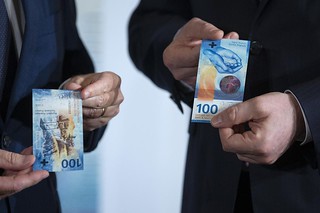 Swiss banknotes are far more resistant to counterfeiters than in previous years, dramatically reducing the number of fake copies, say federal police. By contrast, far
more counterfeit coins were seized last year, probably as a result of better detection methods.
Swiss banknotes are far more resistant to counterfeiters than in previous years, dramatically reducing the number of fake copies, say federal police. By contrast, far
more counterfeit coins were seized last year, probably as a result of better detection methods.
In 2018, a record low of 1,200 fake banknotes were discovered by police. Their combined face value amounted to just CHF208,140, far below the CHF65 million ($66 million) haul of 2001, the Federal Office of Policeexternal link (Fedpol) told the Swiss News Agency Keystone-SDA on Friday.
The reason for the drop in forged notes is advances in technology that make them harder to reproduce – typically by inkjet printers, which are no longer up to the job of producing convincing reproductions.
In 2000, police estimated a total 17,654 fake copies of the largest Swiss banknote (CHF1,000) still in circulation. But fewer copies are now being detected as it becomes harder to make them. Last year, only 82 fake CHF1,000 notes were uncovered - a drop of 99.5% from 2000.
But the number of detected fake coins spiked, probably because of better detection methods. Advanced equipment spotted 6,512 fake copies of the CHF5 coin in 2018, compared with just six examples in 2007.
To read the complete article, see:
Technology winning battle against banknote forgers
(https://www.swissinfo.ch/eng/fake-money_technology-winning-battle-against-banknote-forgers/45307548)
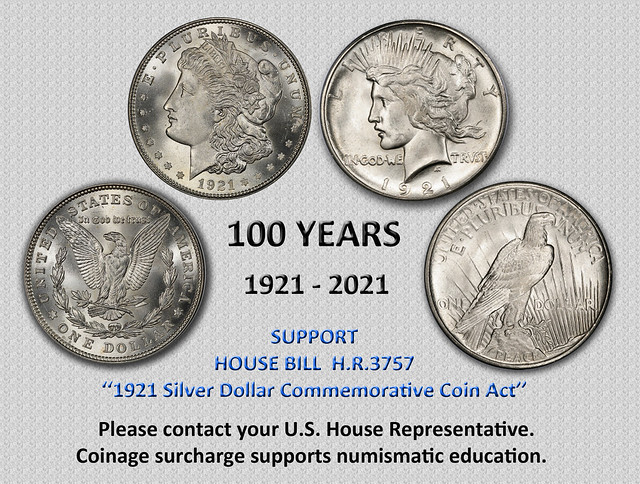
WHAT'S YOUR COLLECTION EVACUATION PLAN?
Antiques expert Harry Rinker has a regular column on the Worthpoint site, and I enjoy it regularly. His latest one has important advice for all of us who have rare collectibles in our homes. -Editor
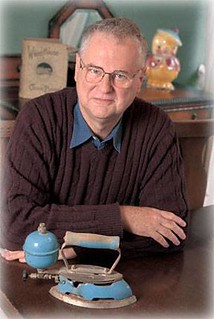 National disasters wreak havoc on antiques and collectibles. Irreplaceable family heirlooms are gone. Collection losses, whether large or small, deeply impact the
collecting psyche. Few collectors have the courage, determination, and will to start over. The task is too daunting. It is easier to turn away and forget. No matter how strong the
memories, they are a poor substitute for seeing, handling, and displaying objects.
National disasters wreak havoc on antiques and collectibles. Irreplaceable family heirlooms are gone. Collection losses, whether large or small, deeply impact the
collecting psyche. Few collectors have the courage, determination, and will to start over. The task is too daunting. It is easier to turn away and forget. No matter how strong the
memories, they are a poor substitute for seeing, handling, and displaying objects.
This column deals with natural disasters such as fires, flooding, hurricanes, and winds where forecasters and civil officials can provide an adequate warning that allows collectors to take action. The timeframe varies. It may only be an hour or two. More likely, it will be measured in days.
Only fools fail to heed the warning. During a natural disaster, the news is filled with people who either decided to wait out the threat for the excitement attached to it or are dumb enough to believe in the “it will never happen to me” concept.
Individuals who live in areas susceptible to fires, flooding, and hurricanes usually have a personal evacuation plan that focuses on safely removing themselves, family, pets, and key family documents. Few evacuation plans consider precious family heirlooms and collections. This is a mistake.
One antiques and collectibles evacuation plan is insufficient. A minimum of three is needed based on the amount of time available to put the plan in operation. The three plans are based on having one to two hours, three of five hours, and one day to implement.
Before deciding what to include in each of the plans, it is necessary to determine how much space is available for antiques and collectibles in the vehicle or vehicles that will be used during the evacuation. Will one or two vehicles be used? What types of vehicles will be available? Space in a sedan is far different than that found in an SUV or pickup truck.
Most individuals assume evacuation means traveling a long distance. While this may be true for personal safety, it may not necessarily apply to antiques and collectibles. Antiques and collectibles only need to be moved to a safe location that will resist the impact of the natural disaster. Collectors should identify buildings, warehouses, and storage facilities in an hour or two drive that can be utilized in case of an emergency evacuation order. Given sufficient time, the collector may be able to make multiple trips to one of these facilities before having to vacate.
More times than I care to remember, reporters interviewing me ask: “If your home was threatened by a fire or disaster, what is the one thing you would save?” Get a life. One thing be damned. I would grab as many things as I could.
Great advice - see the complete article online for more, and look for future columns on the topic as well. -Editor
To read the complete article, see:
RINKER ON COLLECTIBLES: EVACUATE
(https://www.worthpoint.com/articles/blog-entry/rinker-on-collectibles-evacuate)

LOOSE CHANGE: OCTOBER 20, 2019
Here are some additional items in the media this week that may be of interest. -Editor
The Slow Burn of Acidified Paper
For bibliophiles, here's an article about a less dramatic but equally important threat to our collections - the "slow burn" of acidified paper. -Editor
 Sometimes you need to be brutal, eschewing sentimentality as you cut off a spine or replace a book’s old, water-stained cover. At other times, gentle,
delicate—especially with the books from Special Collections, those unique, fragile (and expensive) texts. And sometimes you find books with yellowed, stiff pages. The old
dog-eared folds break off in triangles, flutter to the floor. These books can’t be helped by simple repairs—they’re acidified, dying, and the opposite of unique. In fact, they’re
examples of a large-scale catastrophe that’s been quietly building in libraries for decades.
Sometimes you need to be brutal, eschewing sentimentality as you cut off a spine or replace a book’s old, water-stained cover. At other times, gentle,
delicate—especially with the books from Special Collections, those unique, fragile (and expensive) texts. And sometimes you find books with yellowed, stiff pages. The old
dog-eared folds break off in triangles, flutter to the floor. These books can’t be helped by simple repairs—they’re acidified, dying, and the opposite of unique. In fact, they’re
examples of a large-scale catastrophe that’s been quietly building in libraries for decades.
It’s called a “slow fire,” this continuous acidification and subsequent embrittlement of paper that was created with the seeds of its own ruin in its very fibers. In a 1987 documentary on the subject, the deputy Librarian of Congress William Welsh takes an embrittled, acid-burned book and begins tearing pages out by the handful, crumbling them into shards with an ease reminiscent of stepping on a dried-up insect carcass.
The destruction is inevitable. Depending on how a book was made and how it’s been stored, embrittlement can happen in as little as 30 to 100 years. Already, books have been lost, and the methods of preservation are too limited, time-consuming, and expensive to address the scale of the problem. Mass deacidification, where an alkaline neutralizing agent is introduced via a spray or solution applied to paper, once seemed like the golden solution; but while it can be used to prevent slightly acidified paper from deteriorating, it doesn’t reverse the effects of prior damage. The fallback is digitization—a fancy way to say mass-scanning, and the most used method of saving the content of a text, but not the book itself. In an article about the Library of Congress’ digitization efforts, Kyle Chayka reports that it would take literally decades of scanning to preserve the institution’s over 160 million object collection. At our existing technology’s current scanning pace, preserving the prints and photographs division alone would take about 300 years.
To read the complete article, see:
The Little-Known ‘Slow Fire’ That’s Destroying All Our Books
(https://lithub.com/the-little-known-slow-fire-thats-destroying-all-our-books/)

Money Moving Mishaps
An article on the Freight Waves site discusses the logistics of moving money across the nation, and highlights some exceptions to the normal high-security routine. -Editor
 Once in a while, a made-for-TV scene plays out in real life. In May 2018, the rear door of a Brink’s truck flew open during rush hour on Interstate 70 near Indianapolis
“blowing bags of cash onto the highway,” according to the New York Times. State troopers scooped up most of the $600,000, but not before dozens of people helped themselves
to fistfuls of $20 bills.
Once in a while, a made-for-TV scene plays out in real life. In May 2018, the rear door of a Brink’s truck flew open during rush hour on Interstate 70 near Indianapolis
“blowing bags of cash onto the highway,” according to the New York Times. State troopers scooped up most of the $600,000, but not before dozens of people helped themselves
to fistfuls of $20 bills.
The Mint purchases the plain metal discs called a planchet from which it strikes pennies. In September 2016, a tractor-trailer hauling millions of copper-plated zinc planchets en route to the Philadelphia Mint struck a concrete median barrier on I-95 in Delaware and burst into flames.
For 13 hours, clean-up crews used hand shovels and truck-loaded vacuums to recover the planchets scattered along the northbound lanes. Unlike the Brinks’ free-for-all in Indiana two years later, the public didn’t get close to the would-be pennies. Delaware State Police diverted traffic off the interstate at the exit before the crash site.
To read the complete article, see:
Freight All Kinds: Moving money is a precise dril
(https://www.freightwaves.com/news/freight-all-kinds-moving-money-is-a-precise-drill)
Halloween Wooden Coins Good for Ice Cream
Len Augsburger of the Newman Numismatic Portal passed this article along: "Numismatics and ice cream – Eric P. Newman would be proud!" In the past we've discussed people who pass out coins in addition to candy treats at Halloween. This is about "wooden nickels" good for an ice cream treat in Newman's hometown of St. Louis. Unfortunately, the coins are not illustrated. Please enjoy the image of two tasty mini ice cream cones. -Editor
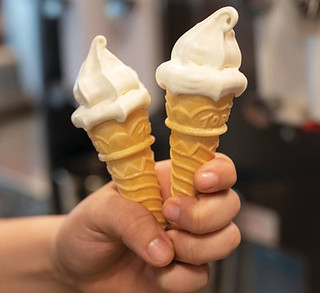 A wooden coin might be the most unique—and possibly best—item you could find in your kid’s trick-or-treat bag this year.
A wooden coin might be the most unique—and possibly best—item you could find in your kid’s trick-or-treat bag this year.
Lion’s Choice is selling packs of wooden coins to hand out to little ghosts and goblins this Halloween. They’re redeemable for a free mini custard cone at any of the restaurant chain’s locations.
“With added concerns of dietary restrictions and allergies, we wanted to offer a safe and easy way for everyone to celebrate,” said Lion’s Choice president and CEO Michael Kupstas.
The $5 packs include 25 wooden coins. They’re available at Lion’s Choice locations through Oct. 31.
The mini cones have been a fixture at Lion’s Choice since the first restaurant opened in St. Louis more than 51 years ago.
To read the complete article, see:
Here's
why you might find a wooden coin in your kid's trick-or-treat bag
(https://www.ksdk.com/article/entertainment/dining/whats-cookin-in-the-lou/lions-choice-wooden-coin-halloween-alternative-trick-or-treat/63-5fe248a9-a16f-49e7-ac7f-88b5f7ee2f82)
FEATURED WEB PAGE: GORGONS OF PARION
This week's Featured Web Page is an article on the Gorgons of Parion from Ed Snible's web site.The hemidrachm from Parion has an unusual design: a staring female face with tongue protuding, surrounded by snakes. The reverse shows a bull standing left and looking back. The greek letters ?? appears above the bull and ?? is between the legs of the bull.
We know these coins come from Parion because of the legend: ????, the Greek letters for PARI. The face is the "gorgoneion," a mask in imitation of the head of the gorgon. In archaic and classical Greek art gorgons were always shown facing the viewer, protruding tongue, and teeth. Very early ones were sometimes depicted with beards, but never on coins. In Greek mythology there were three gorgon sisters. The most famous was Medusa who was decapited by the hero Perseus. The hair of gorgons was never depicted as living snakes in ancient times. The snakes, if any, were shown near or later sometimes in the hair. Sometimes the gorgon head had wings, but never on the coins of Parion.
It isn't clear why Parion chose a hideous monster as an emblem for the city. Perhaps it was chosen as a symbol of terror. It was used on Greek shields to frighten the enemy as well as for it's hypnotic ability--something about the gorgoneion attracts gaze of enemy soldiers toward the shield and thus away from the weapon hand. Could the gorgon head on Parion's coins represent military shields and ability of Parion's military?
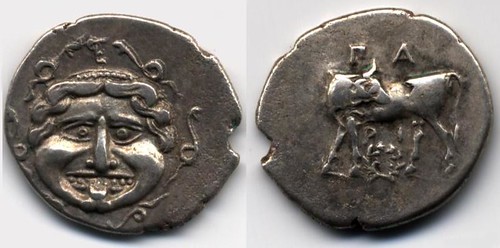
http://snible.org/coins/parion.html

